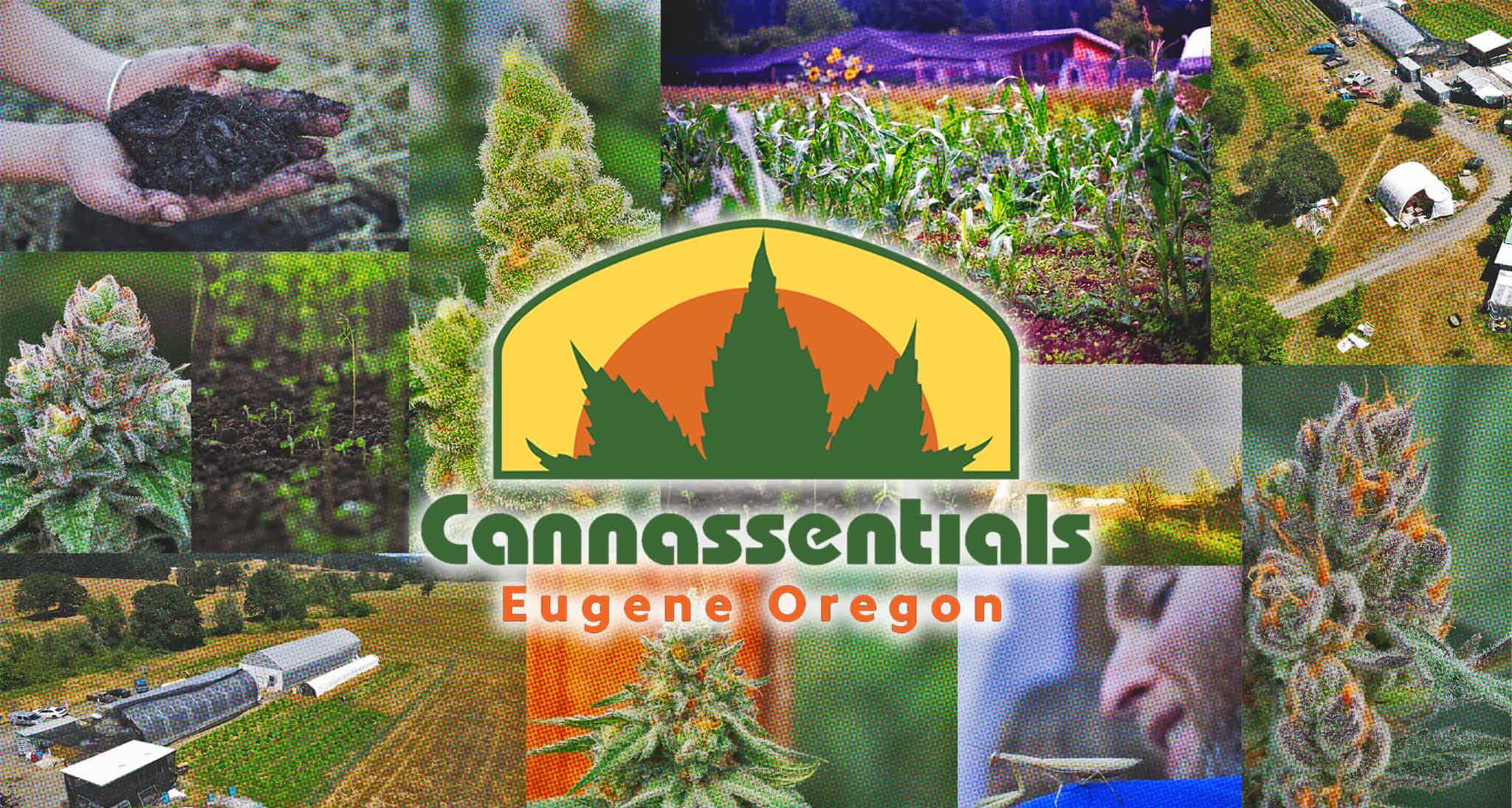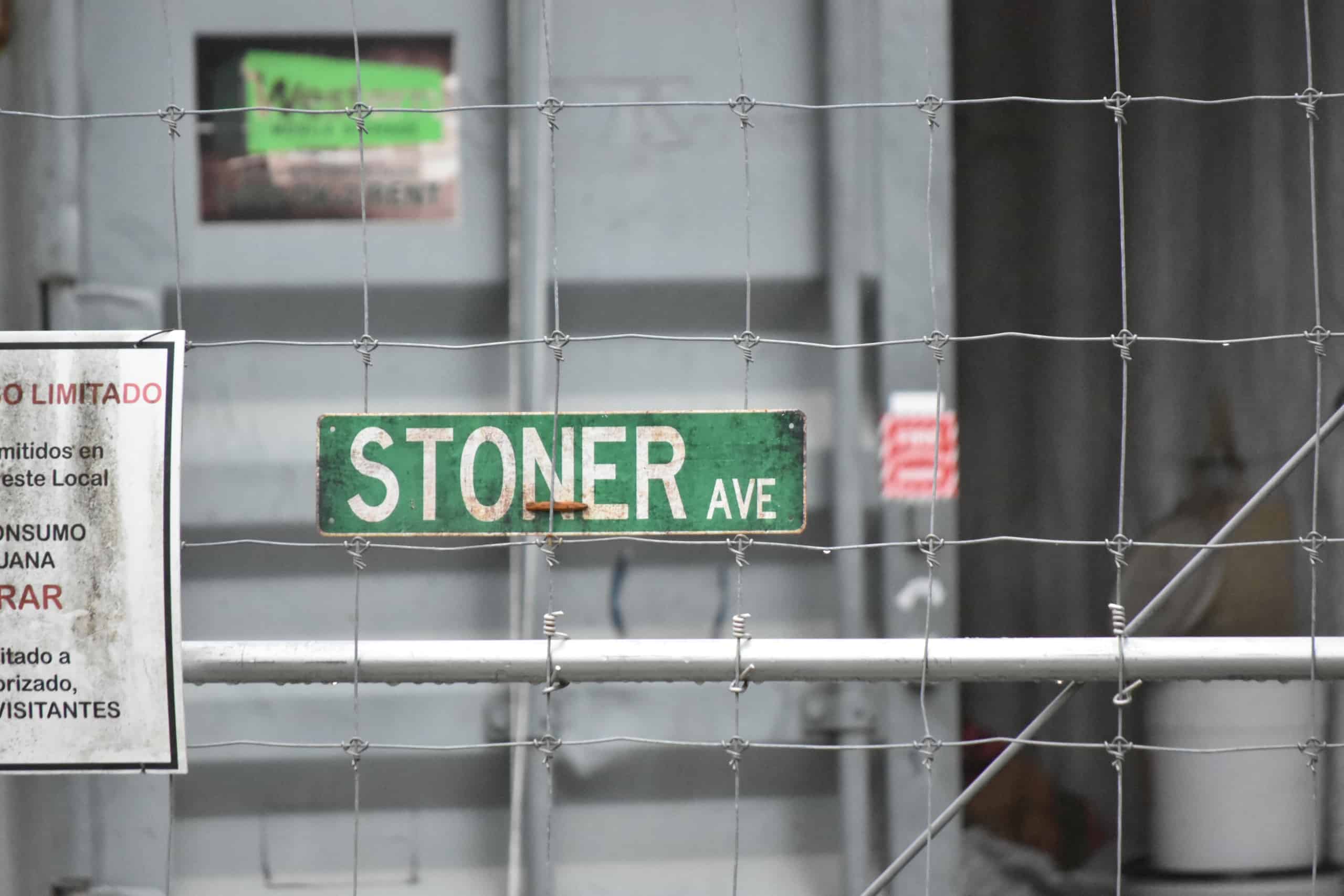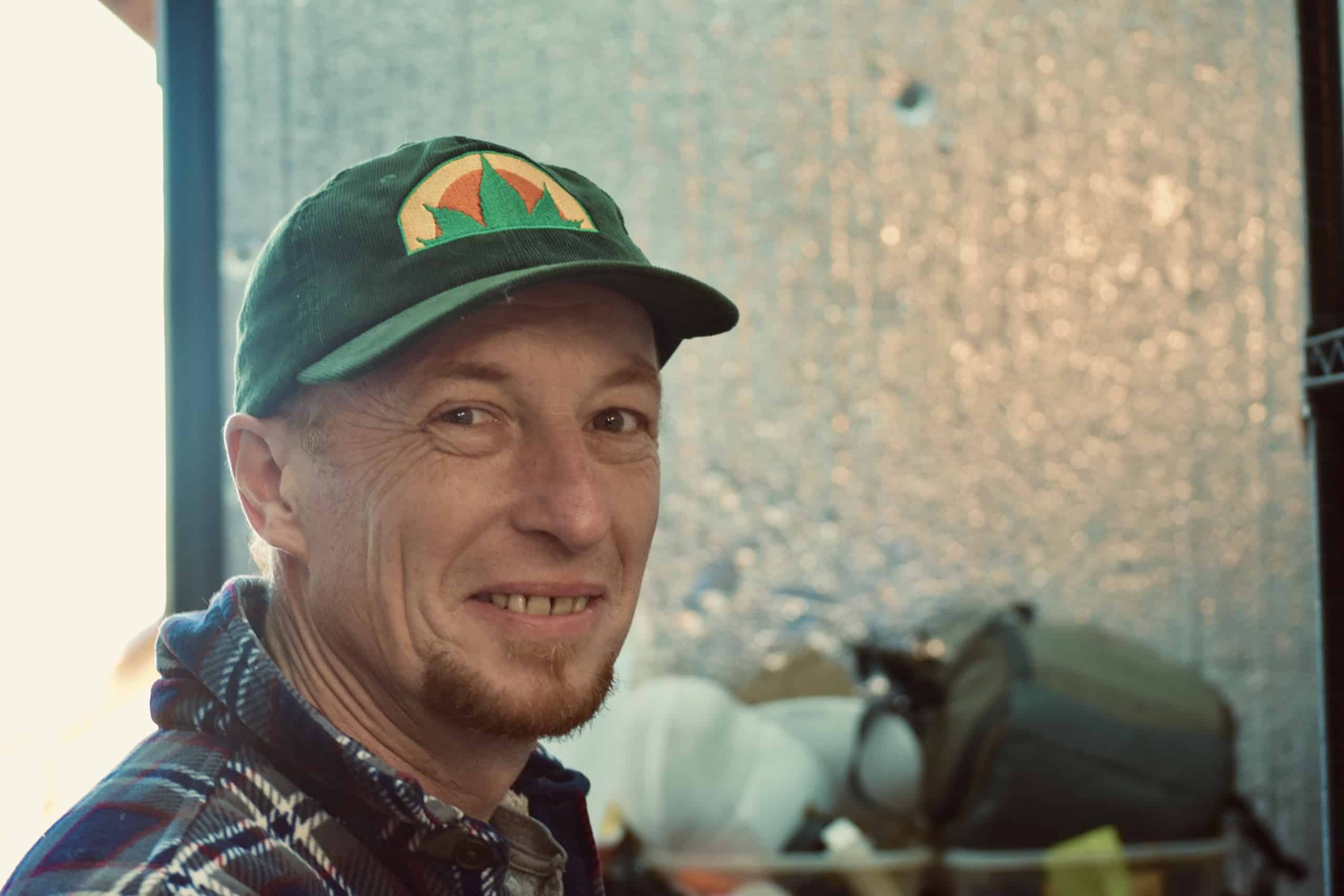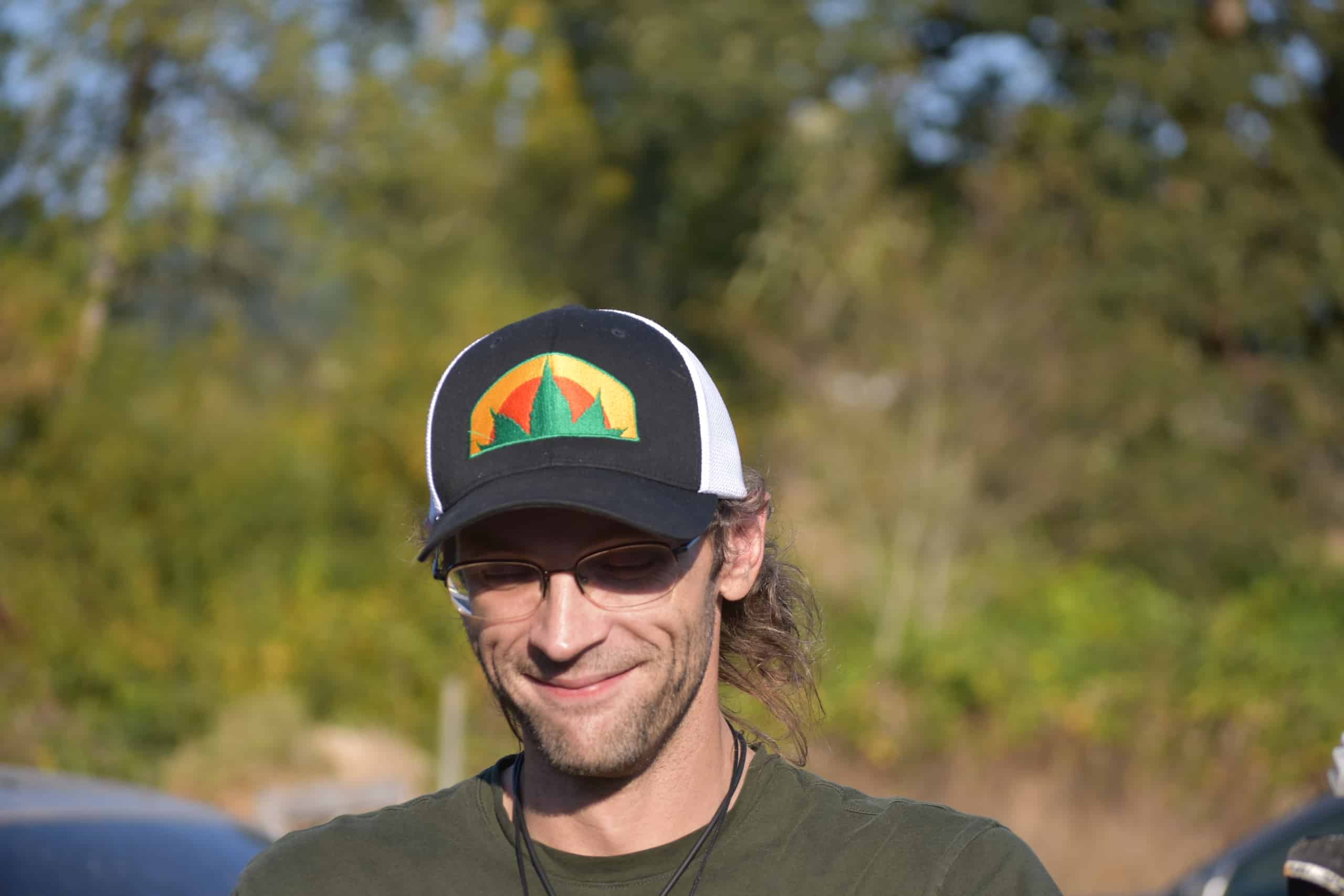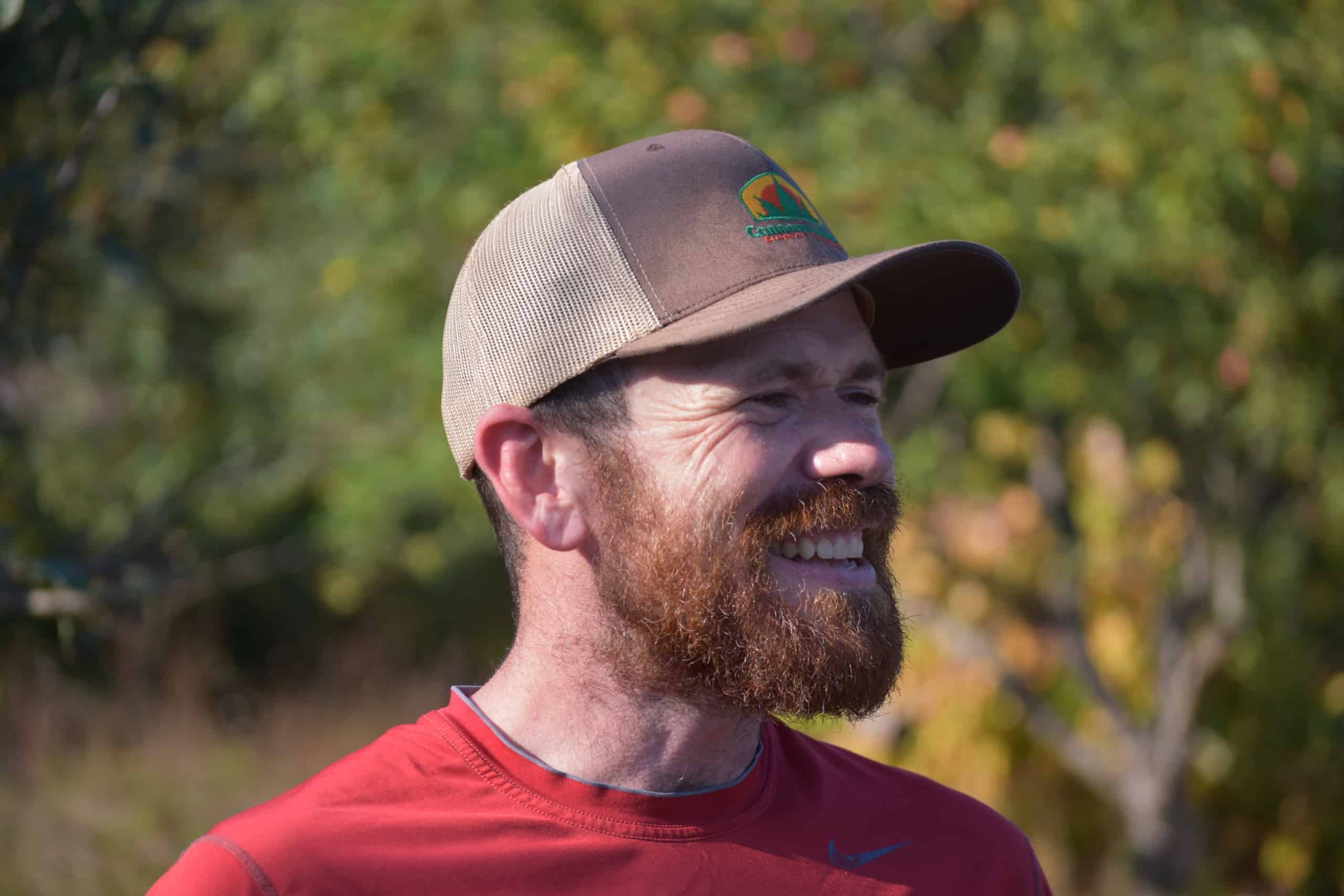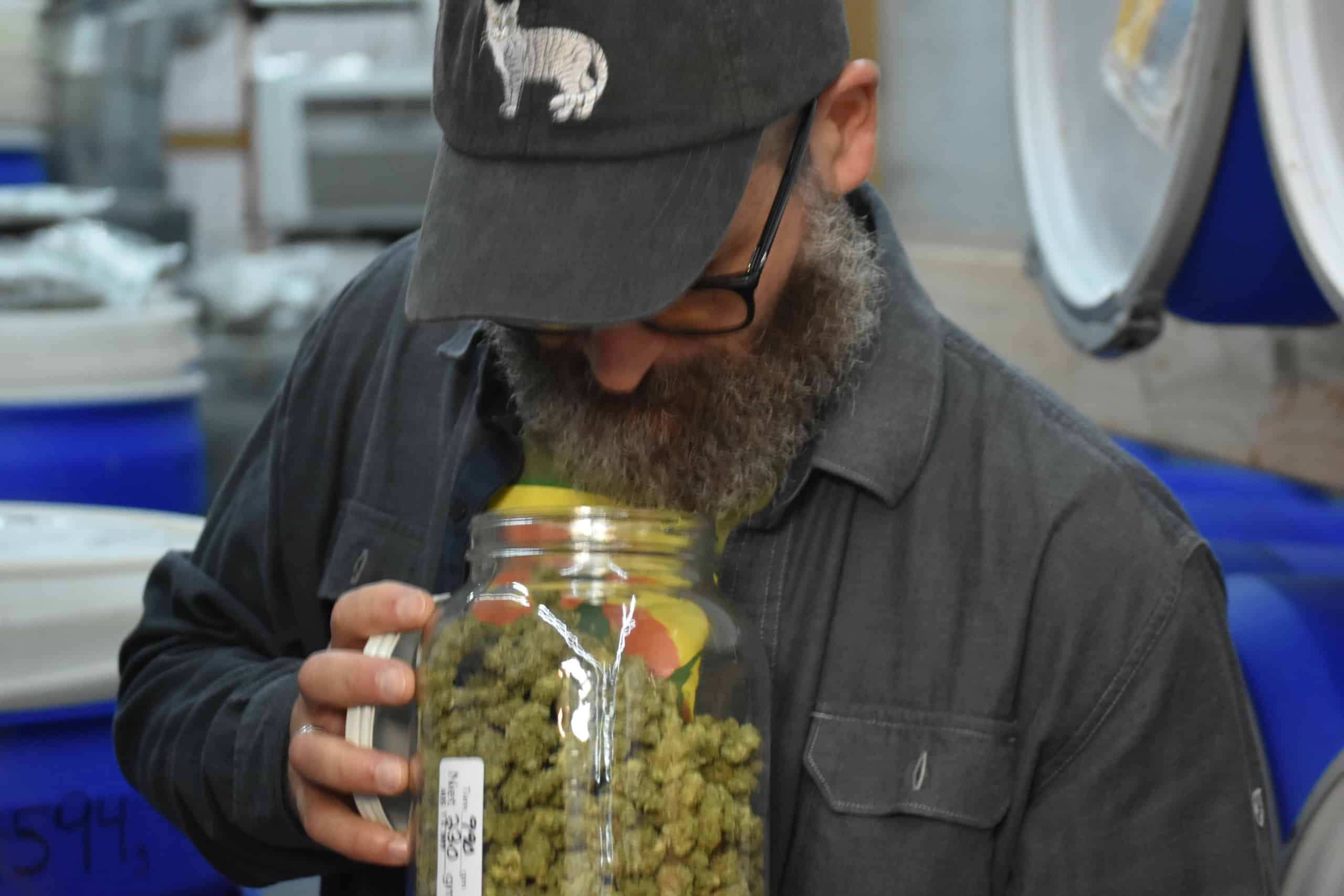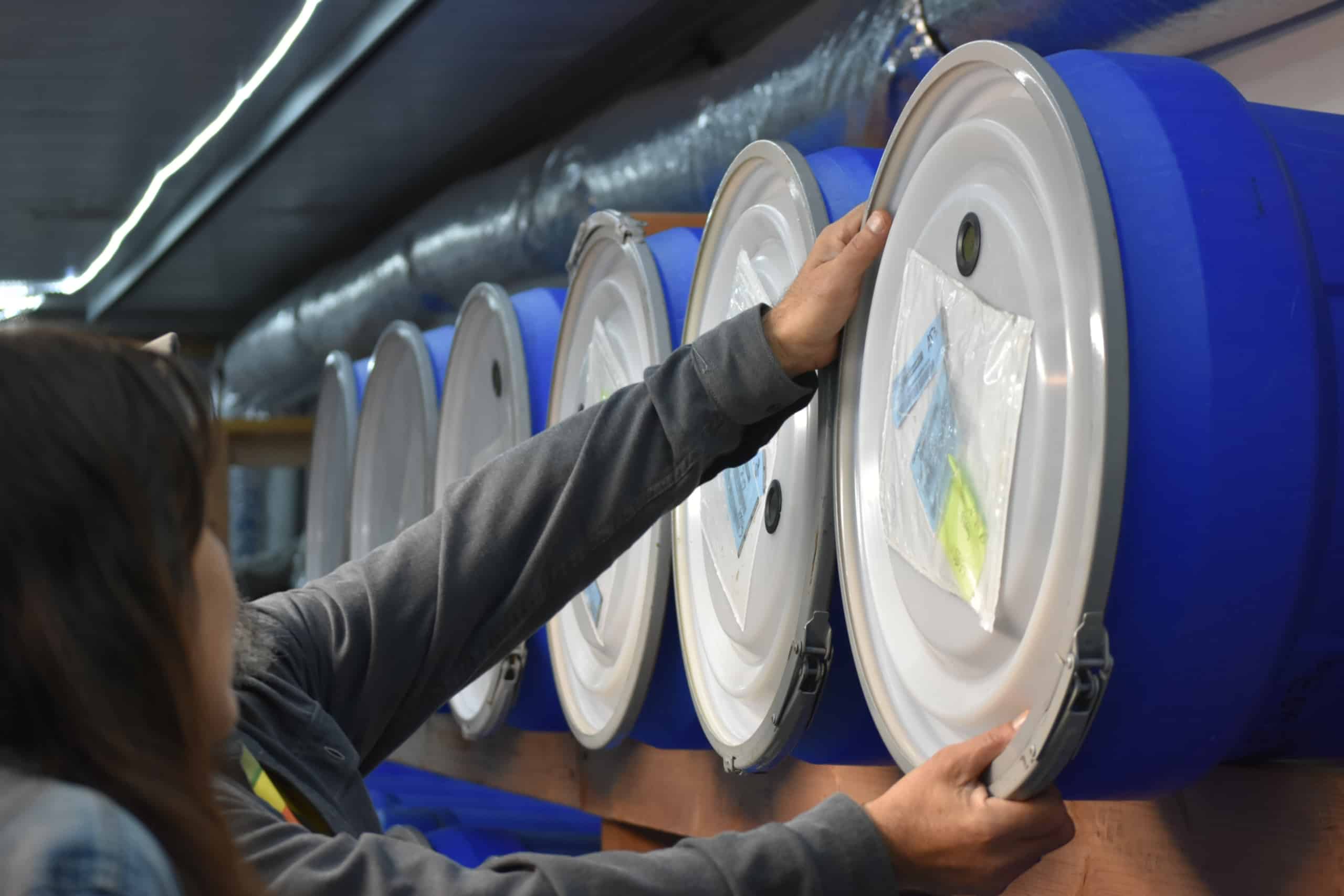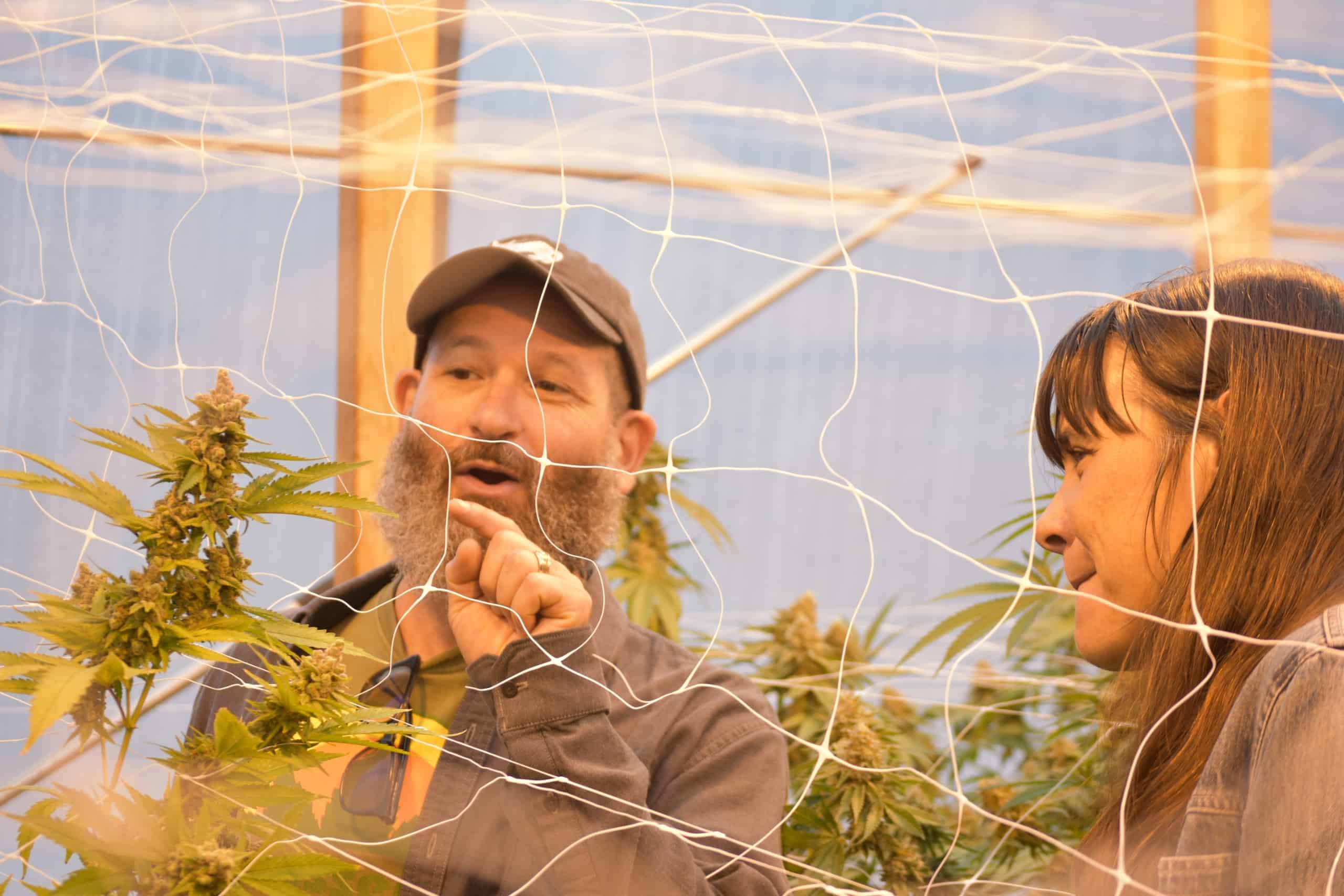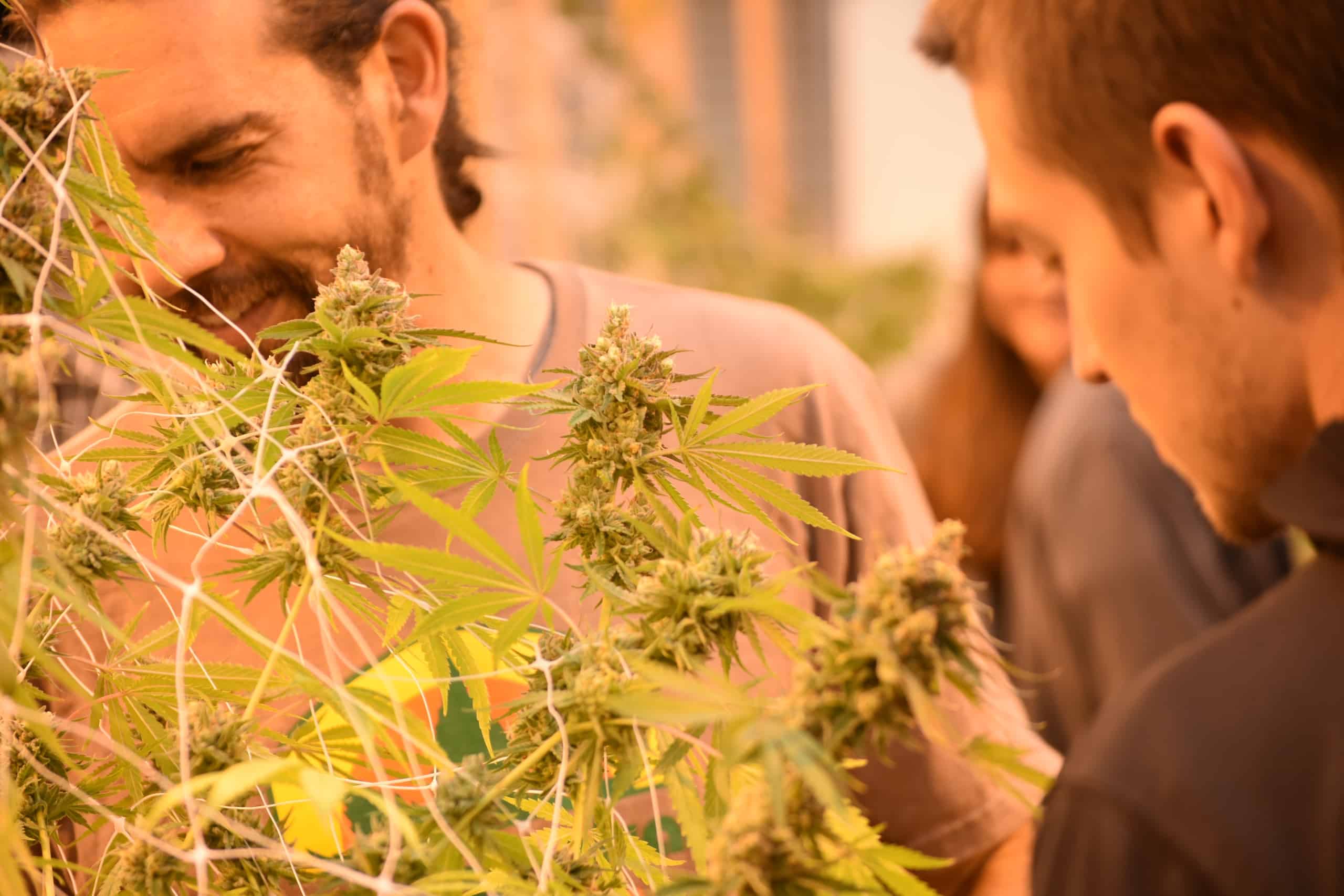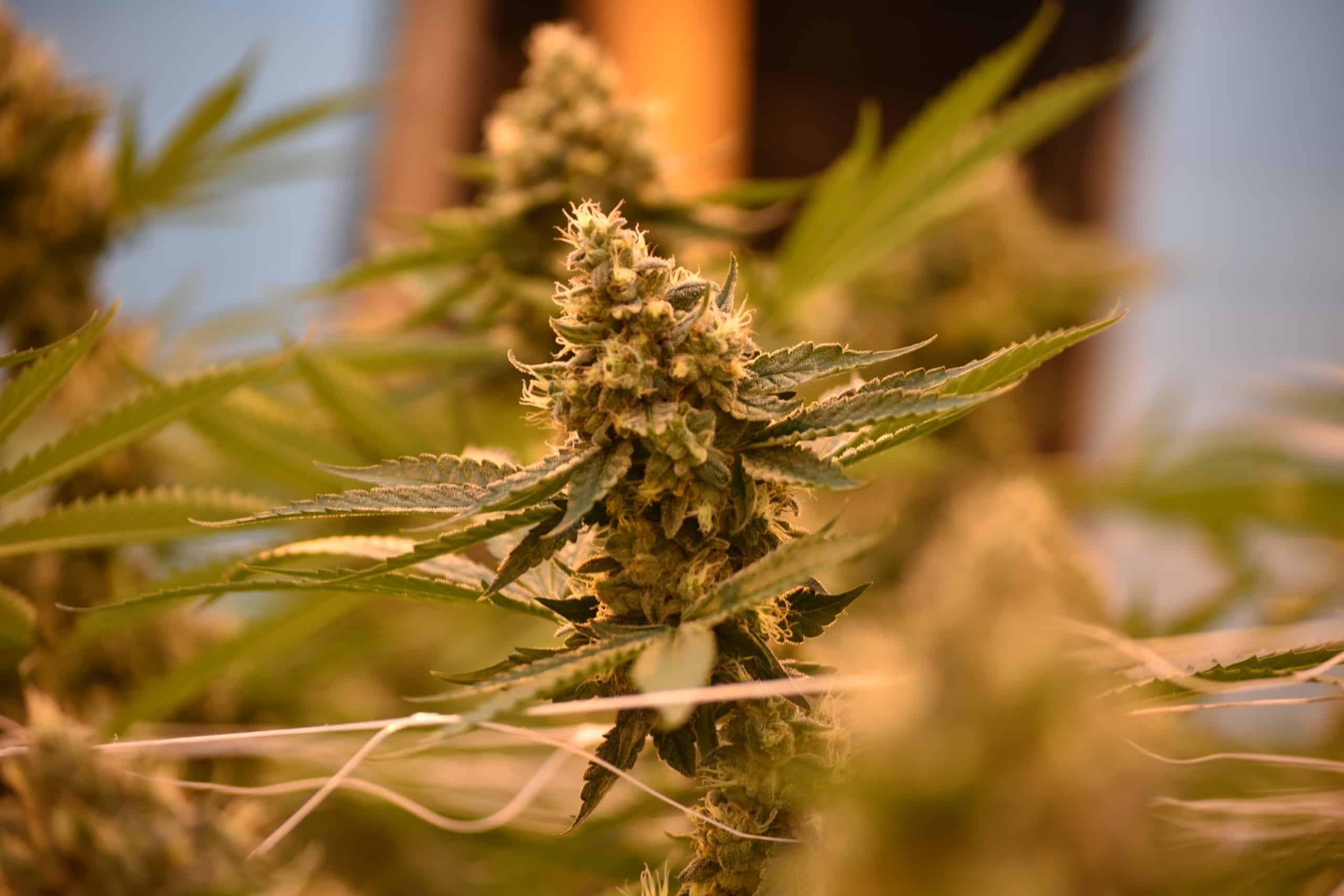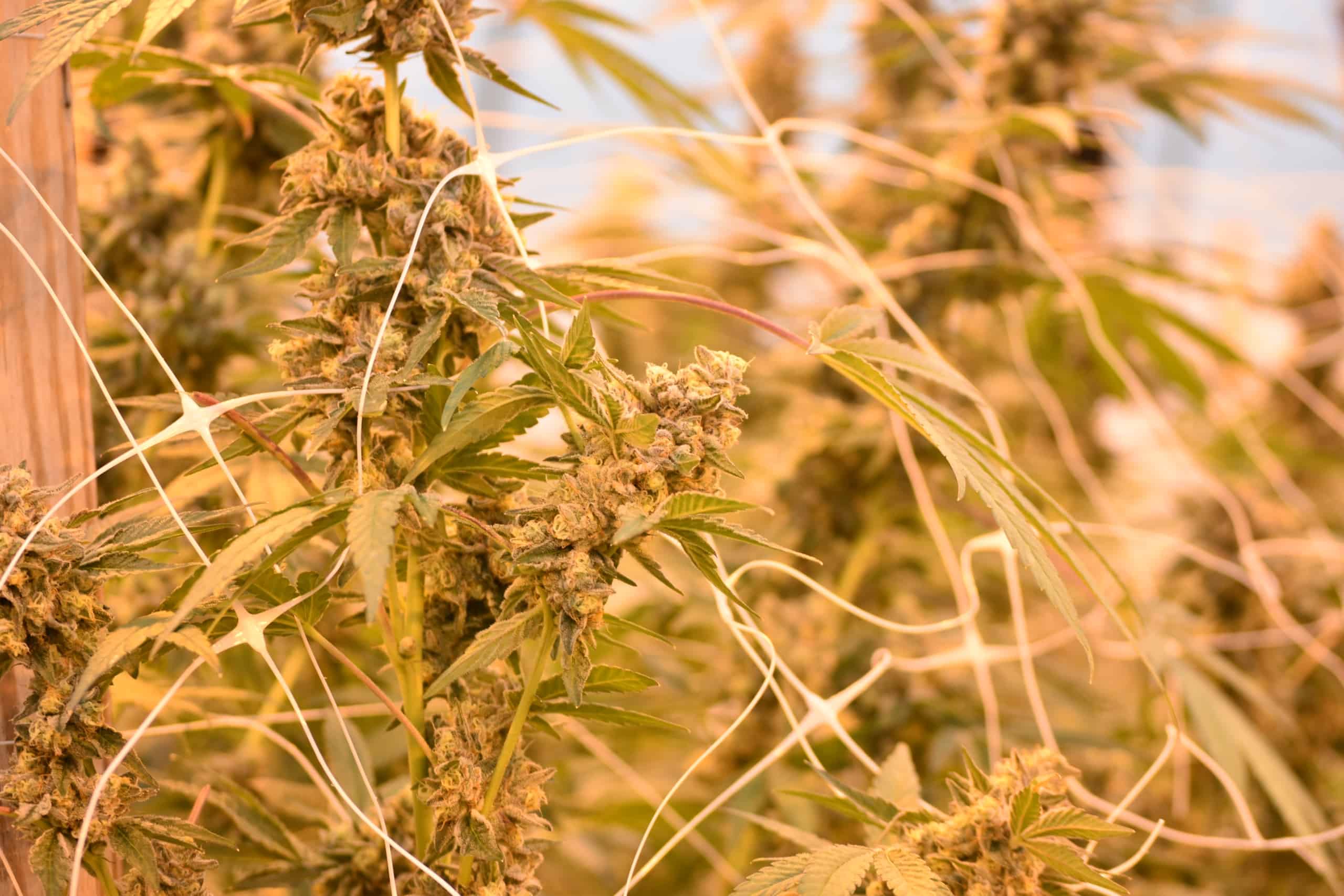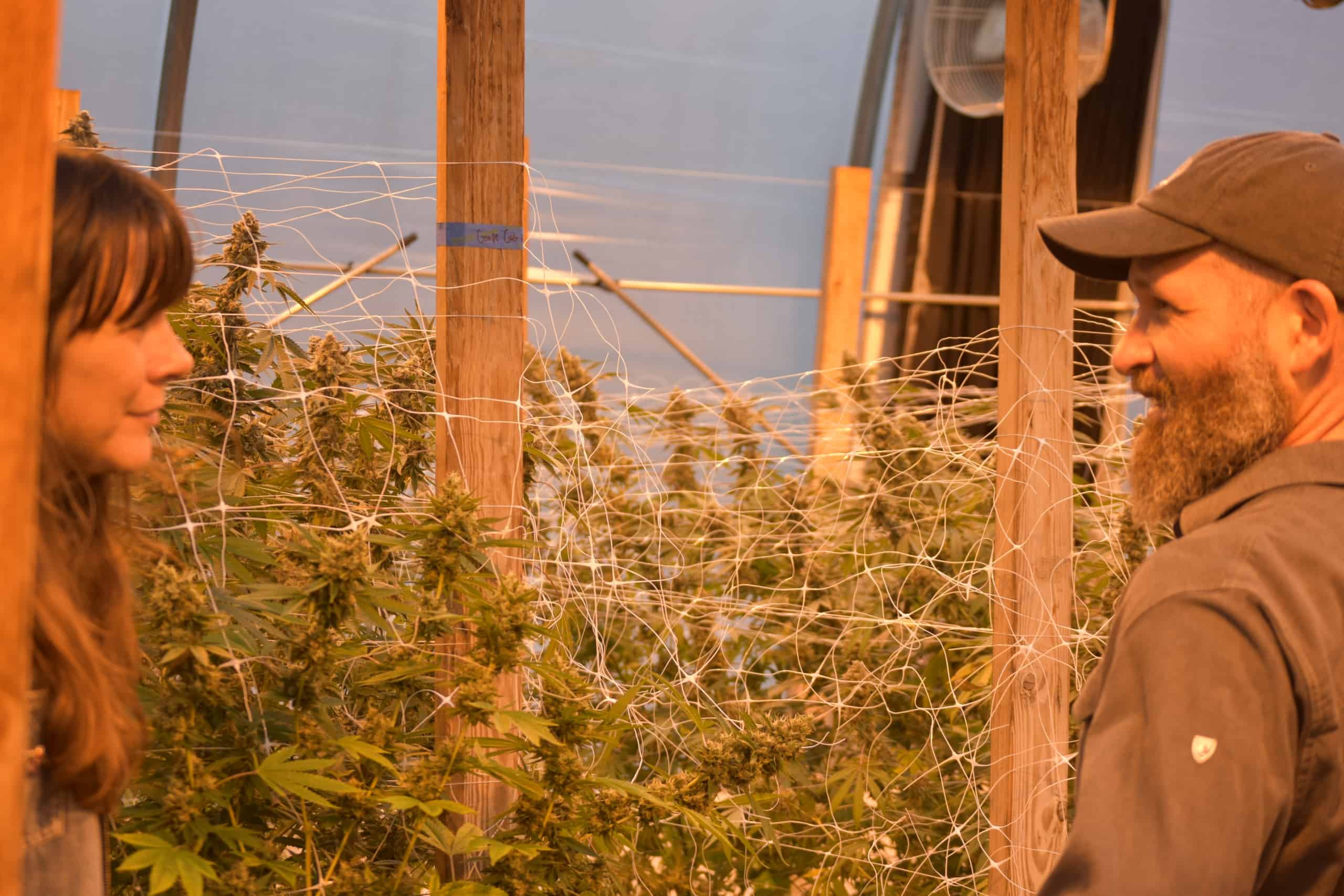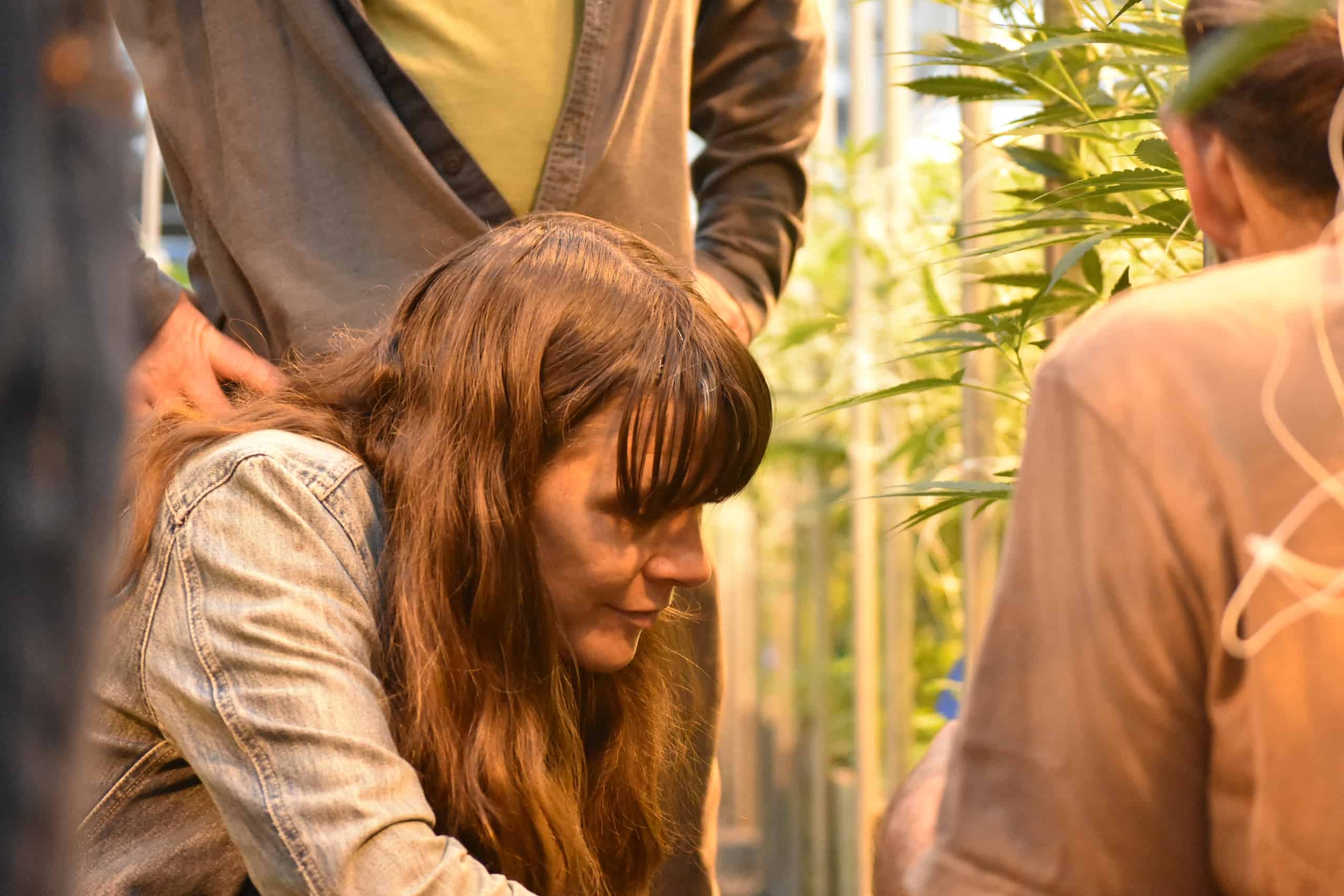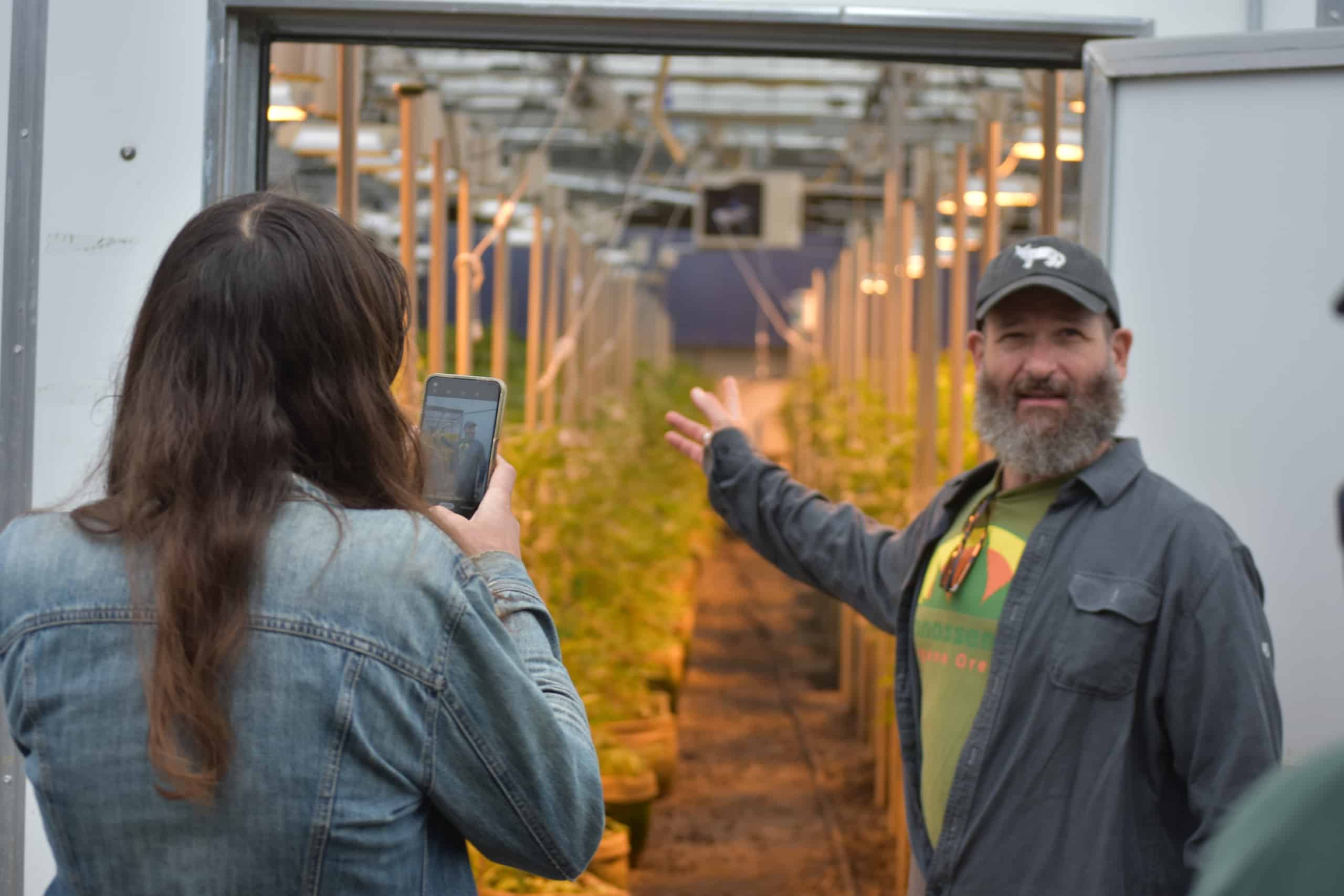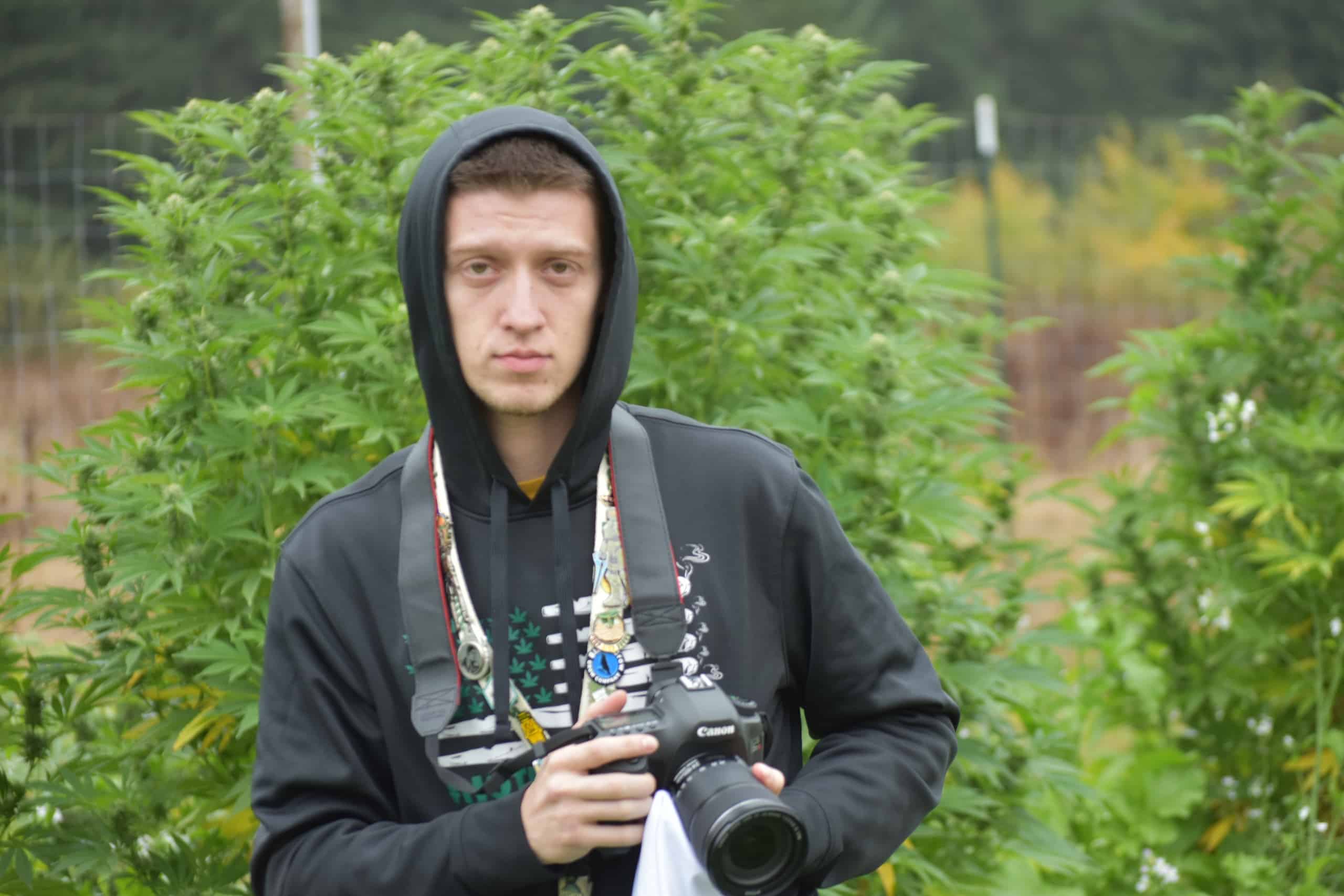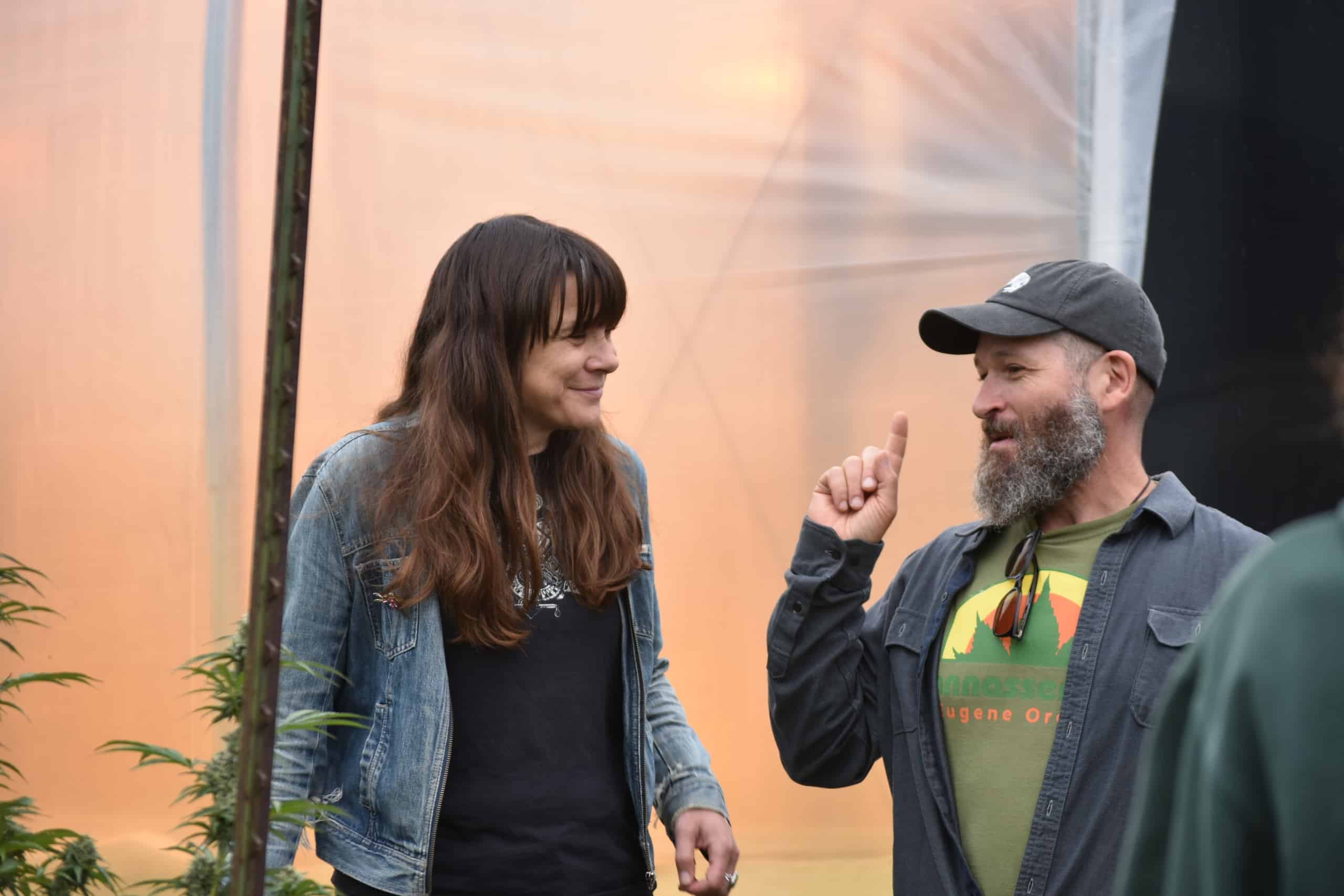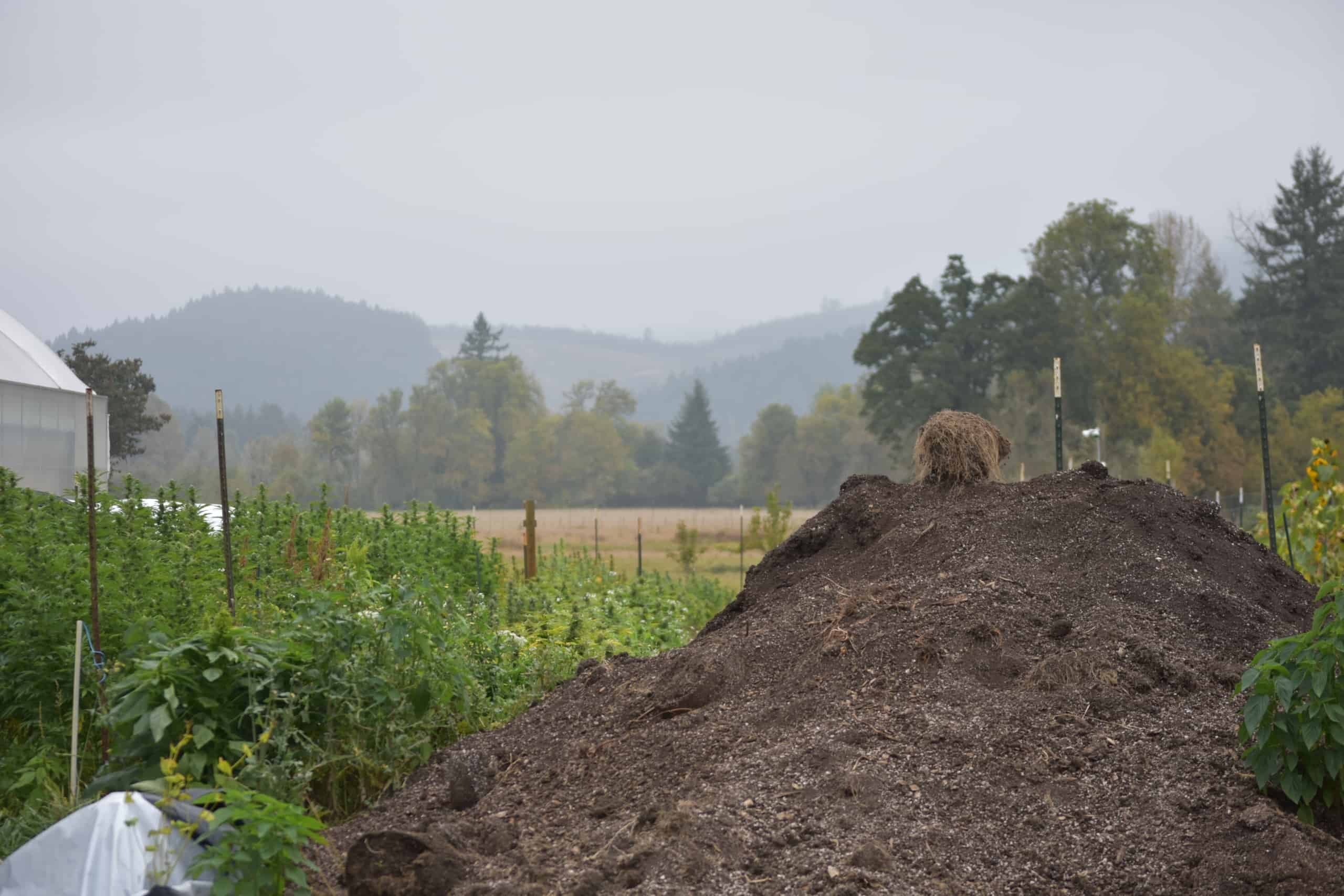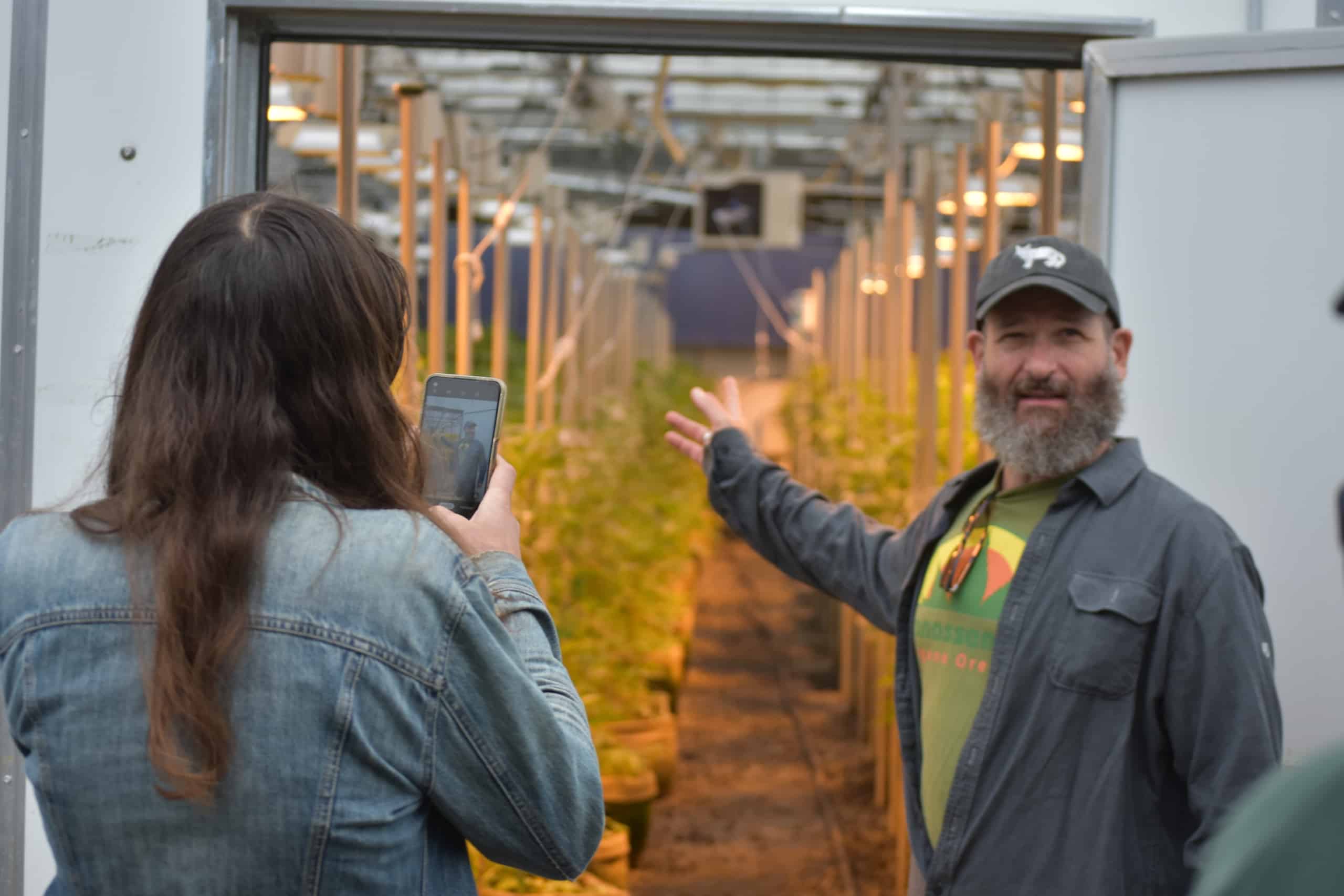The mist hangs low in the fields as I pull into the gravel parking lot. Located on the western edge of the Willamette Valley, the farm is a cluster of greenhouses surrounded by outdoor gardens and encircled by a chain link fence. A street sign on the gate reads “Stoner.” On this October day, the sky is gray above dark thickets of fir and cedar. The air smells like apples and dead grass and, of course, weed.
Cannassentials was founded by Myron Chadowitz and his cousin Shane, who has deep roots in Oregon’s elite grow scene. I first met Myron and Shane at MJ Unpacked Las Vegas in 2021, which is ironic because their farm is forty-five minutes from my home in the Coast Range, and it turned out that Shane is tight with legacy farmers from my community. I only mention this because Shane’s connections within the ecosystem of Oregon growers are as sure a sign of the brand’s credibility as the fragrance wafting from the Cannassentials greenhouses.
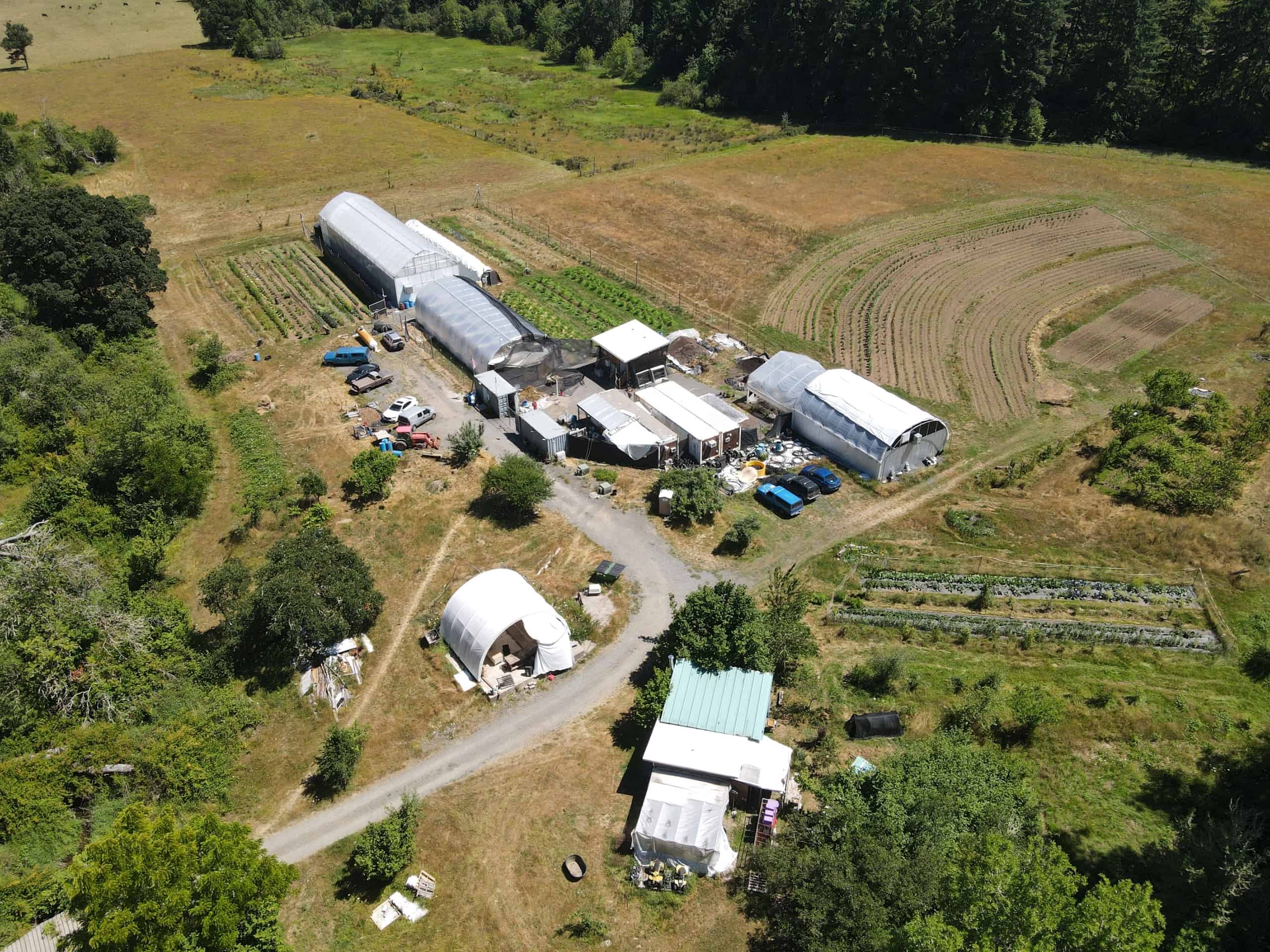

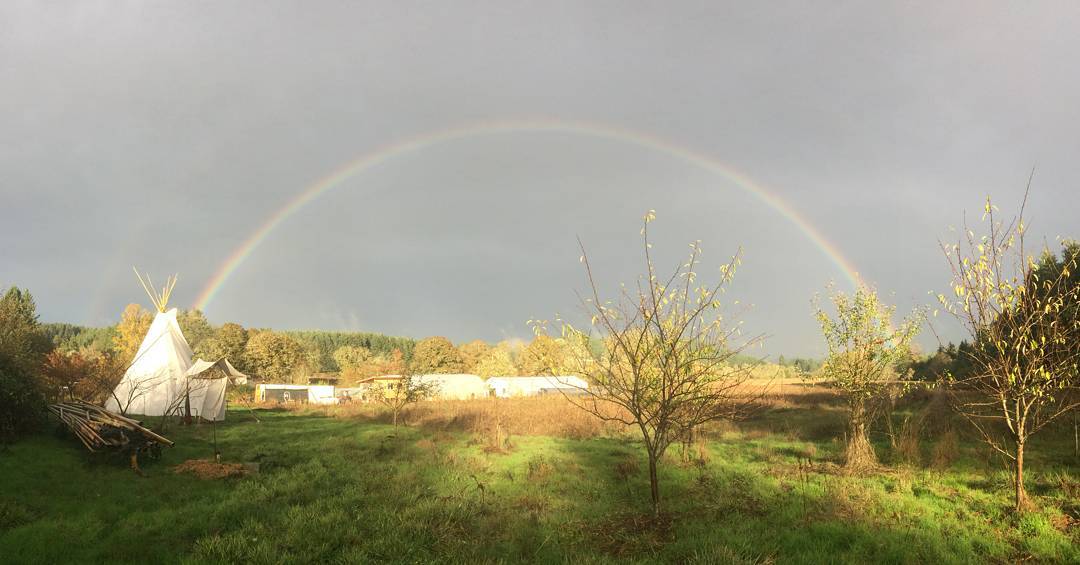
With his ponytail, Carhartts, and obsession with composting methods, Shane gives off a deeply Oregonian vibe. In fact, he and Myron spent their first few years in South Africa before immigrating to New York and Jersey. After childhood, their trajectories diverged. Myron became a certified vegan chef, started a natural foods company, and later managed the family bathrobe business. Meanwhile, Shane followed The Grateful Dead and Phish before settling in Oregon to farm.
Though their lives were running different courses, the cousins had congruent ethics–they both had a wholehearted commitment to organics and environmental sustainability. In 2010, Myron and his wife Gaby moved to Oregon to help Shane and his wife Ally realize the dream of a cannabis farm where a stringent commitment to best practices would create the best possible bud.
“Our vision has always been to have a business that does something we both really believe in, delivering a clean, quality product that we grow in the best possible way with the least harm to the environment,” says Myron. “Neither of us got into this for the money–we both just wanted a job we could feel good about doing.”
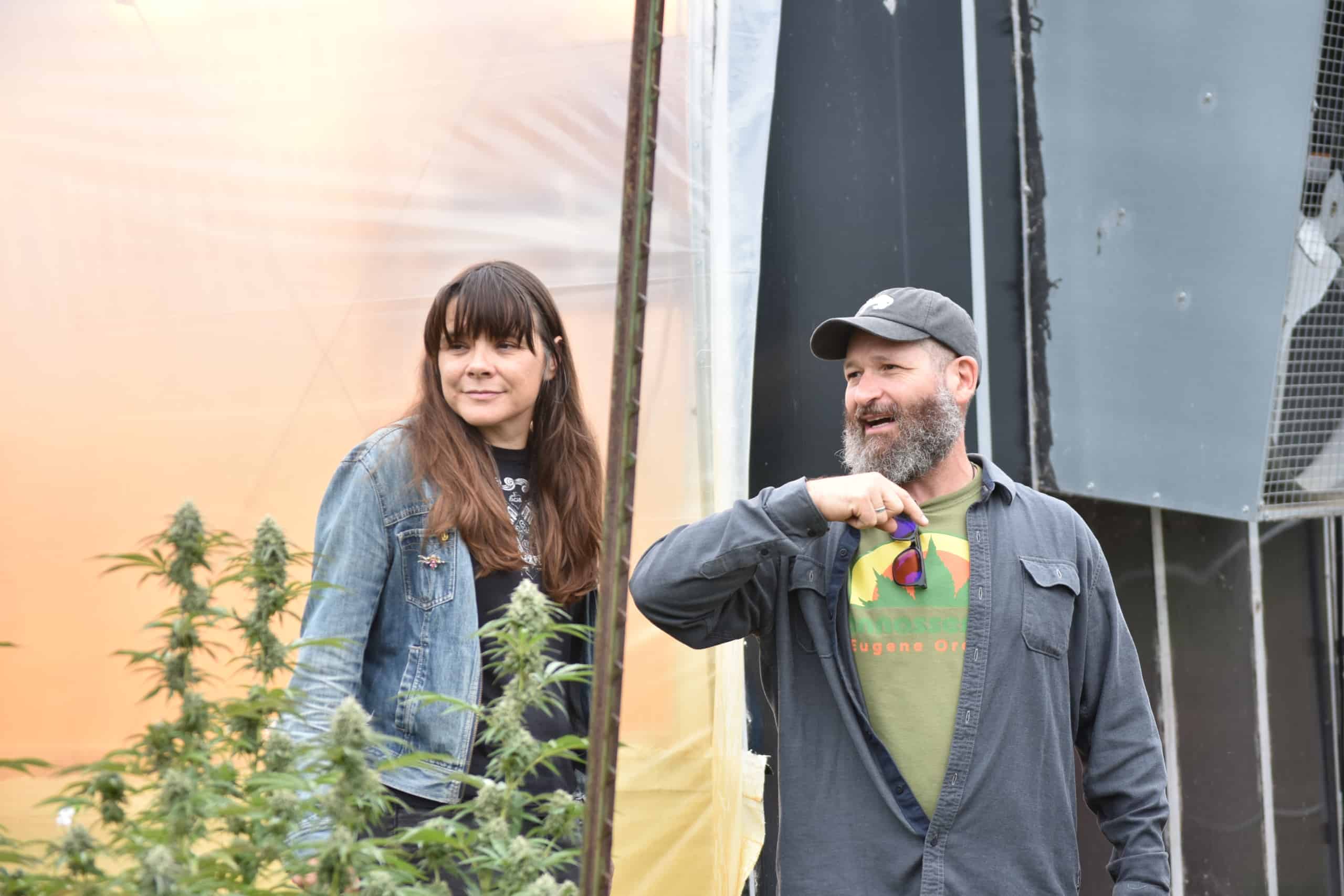
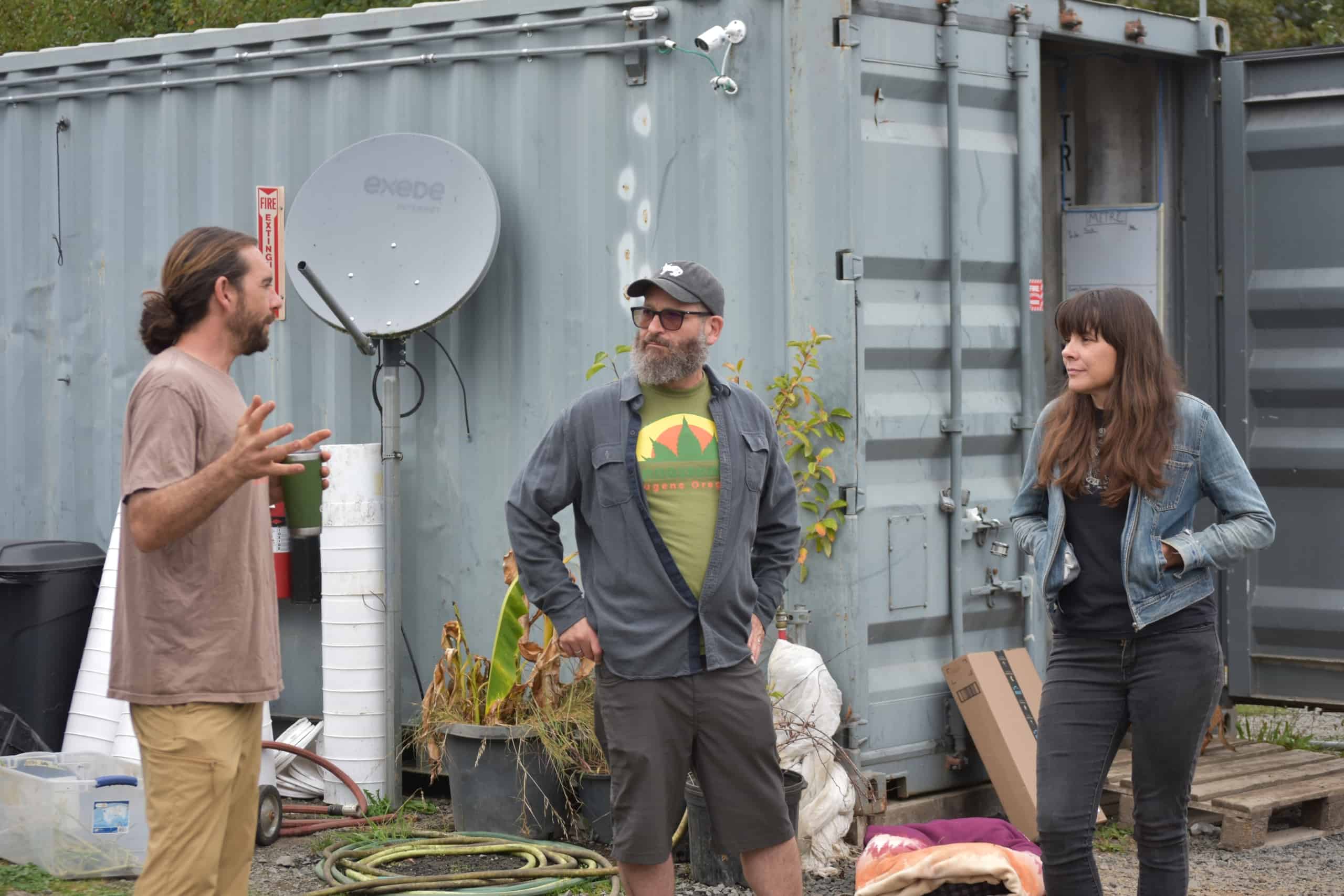
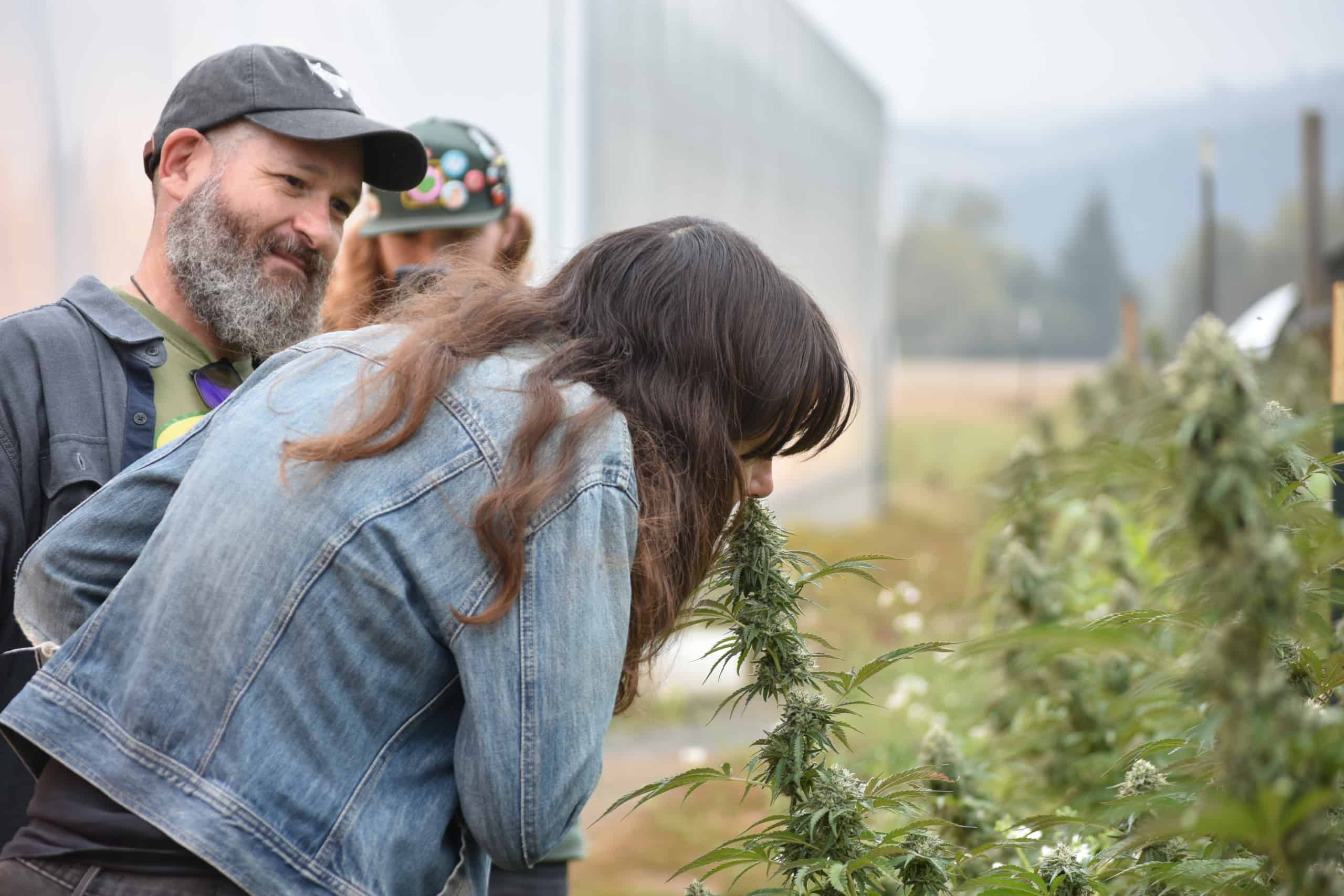
Photos by @north_westmedia
They may not be in it for the money, but their commitment to quality has earned Cannassentials a reputation that demands impressively high prices–-quite a feat in a highly competitive recreational market that also faces stiff competition from an illicit market flooded by organized crime syndicates. This year was tragic for the Oregon cannabis industry, with many artisanal farms folding. But Cannassentials is holding steady.
“Our prices are basically double what the median indoor price is,” Shane says with understandable pride.
Despite being able to fetch top dollar, Myron says there’s a balance between true value and realism. “You want to make sure you’re valued at what you’re worth, but at the same time you gotta make sure you’re at a price that’s gonna move on the shelf,” he reflects.
“It’s a tough market because there’s just so much,” Shane says.
“So much!” Myron agrees emphatically with a laugh of disbelief. “We’re doing better than most of the people that we know, but we’re still struggling every day,” he says. “Last year was profitable. This year has been a bit rough but we are cashflow neutral–which we consider exceptional.”
For the first stop on the tour we go through an atrium-shed built out of the scraps of an old greenhouse that got knocked over in a snowstorm.

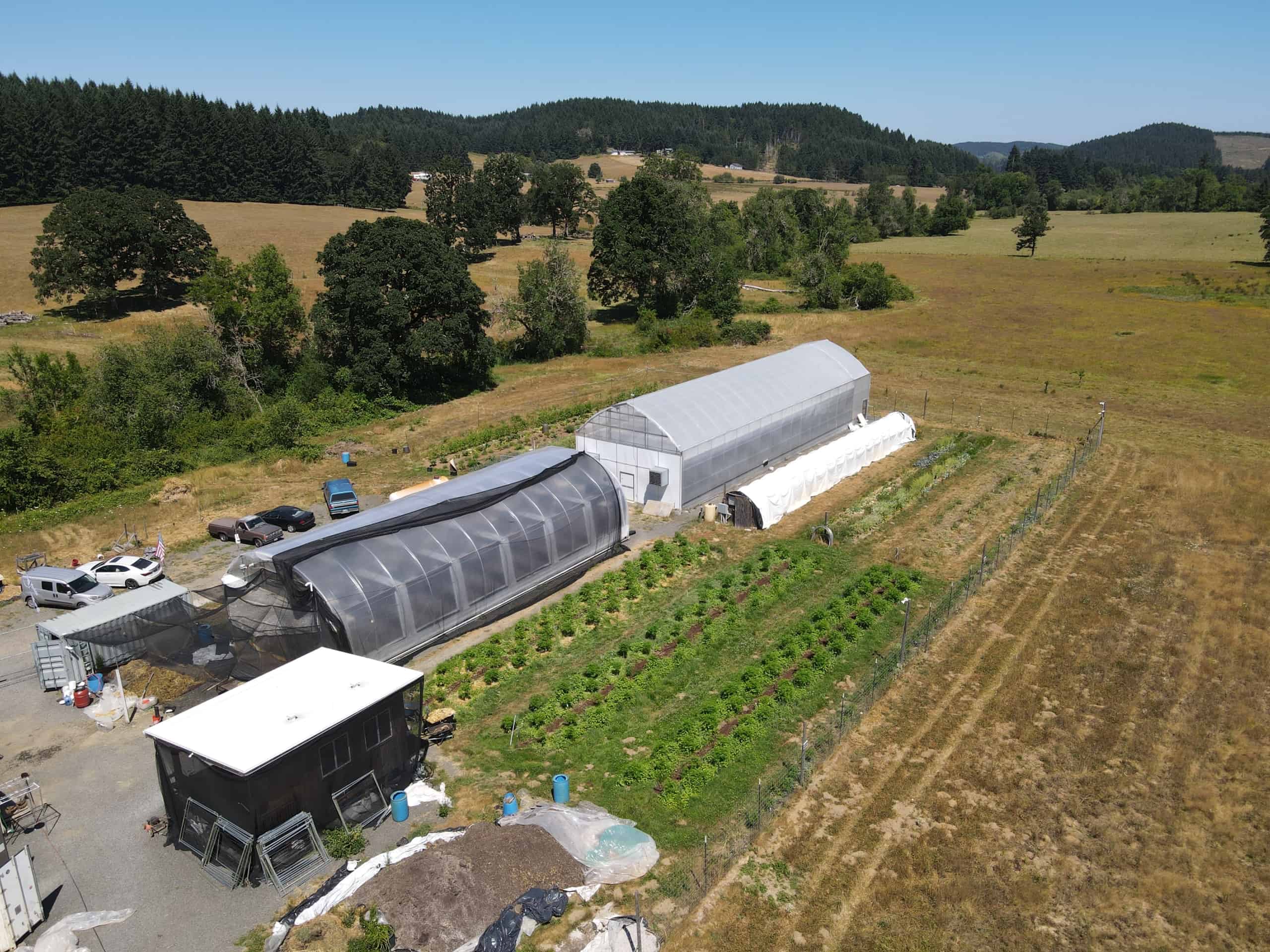
“We are real boot-strappers—anything we can repurpose,” Myron says. “It’s not beautiful—we do what we can with what we have.” He points out the “earth batteries” that help regulate the temperature in the adjacent mother room. “It’s basically a really cheap way of doing geothermal,” he says.
After checking out the nursery, we head outside, where fragrant strains of Spritzer and Atreyu are growing amidst a small forest of daikon, flax, and amaranth.
Shane’s grow philosophy is based on fostering healthy soil and leaving it alone as much as possible. He eschews animal-based fertilizers and store-bought amendments in favor of maximizing the potential of cover crops—using plants like amaranth and buckwheat to attract beneficial insects and simultaneously mine the soil for its minerals. He gives me a science-rich run-down on how this works. In layman’s terms, they mulch the cover crops back into the soil to make said minerals and nutrients better available to the notoriously hungry cannabis plants.
He also creates a variety of plant-based teas to bolster the grow cycle. Some of his concoctions sound like something you might be served at a particularly edgy Portland restaurant–micro teas made with what Shane calls “old growth” soil that’s rich in local fungus, which he mixes with mashed potatoes as a carbohydrate source, adding seawater for micronutrients before fermenting. He describes roasting eggshells and apple cider vinegar to add calcium, and fermenting horsetail tea for silica. They also make their own castile soap for pest control.
“We are doing some extra things,” Shane says, almost apologetically, as though it’s somehow cheating to be using root ferments brewed with hyper-local ingredients. “But it’s all stuff that we’re making,” he assures me as he grabs a stick and pokes it into a barrel. “This is a ferment here with leaves.”
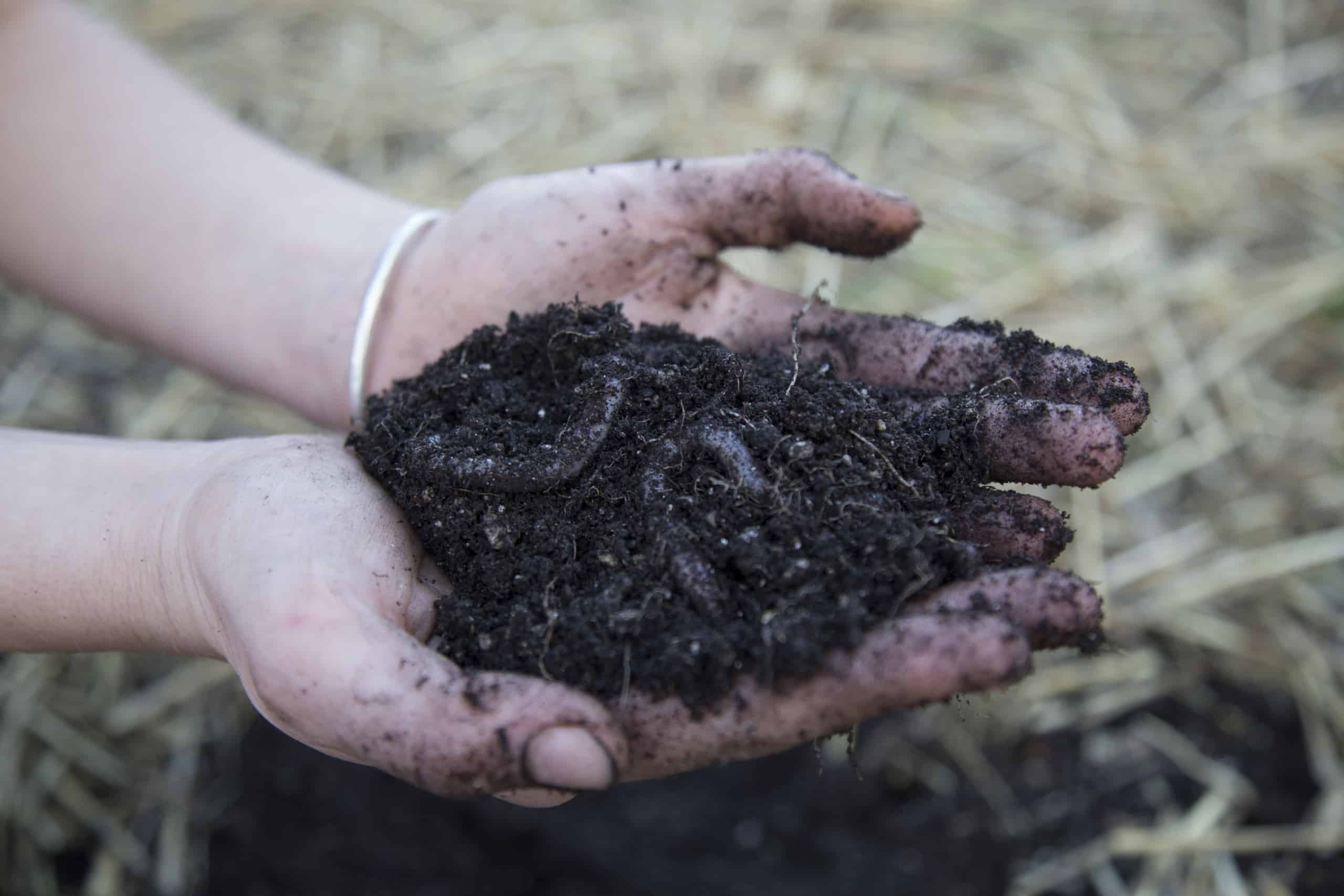
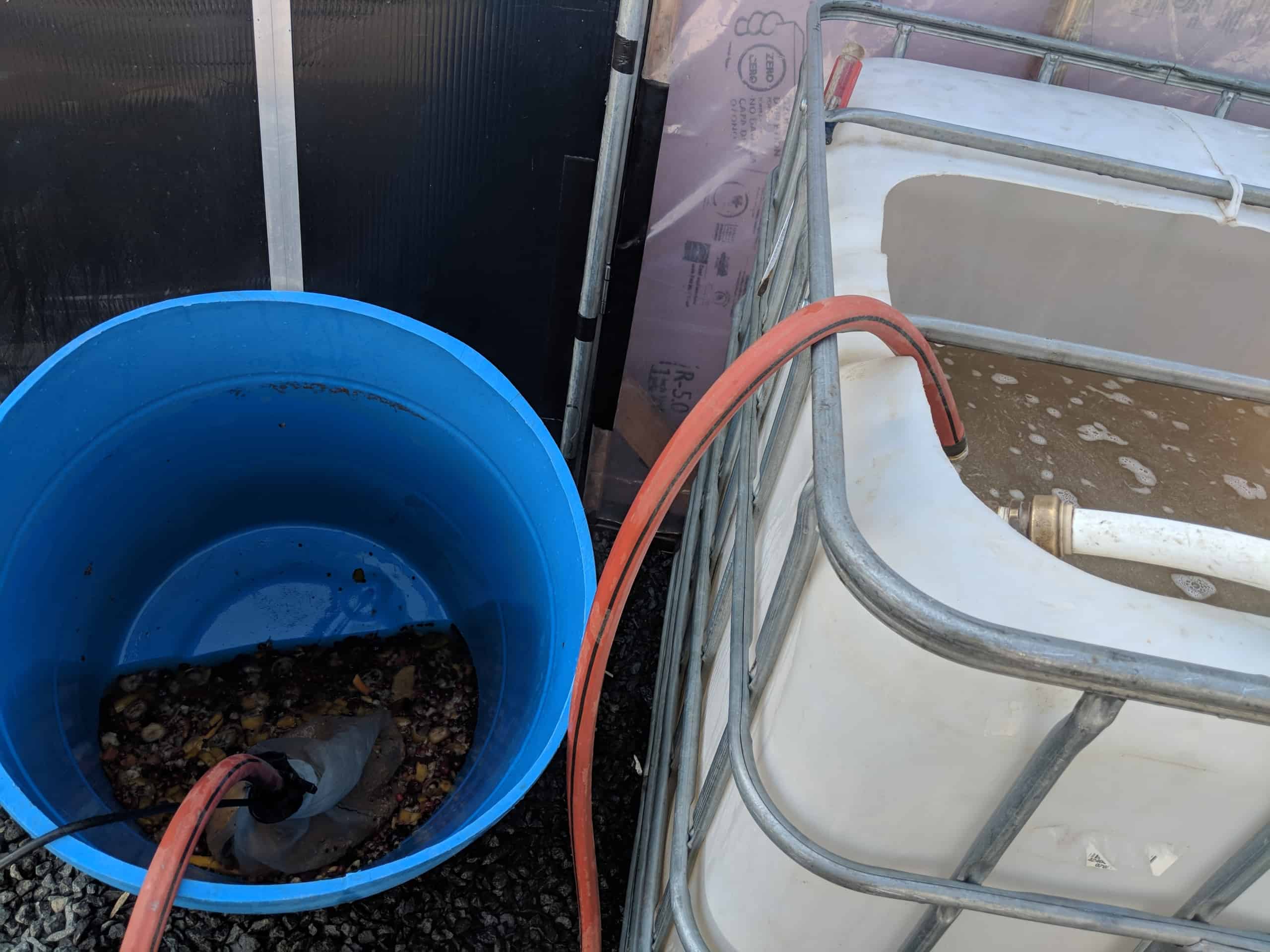
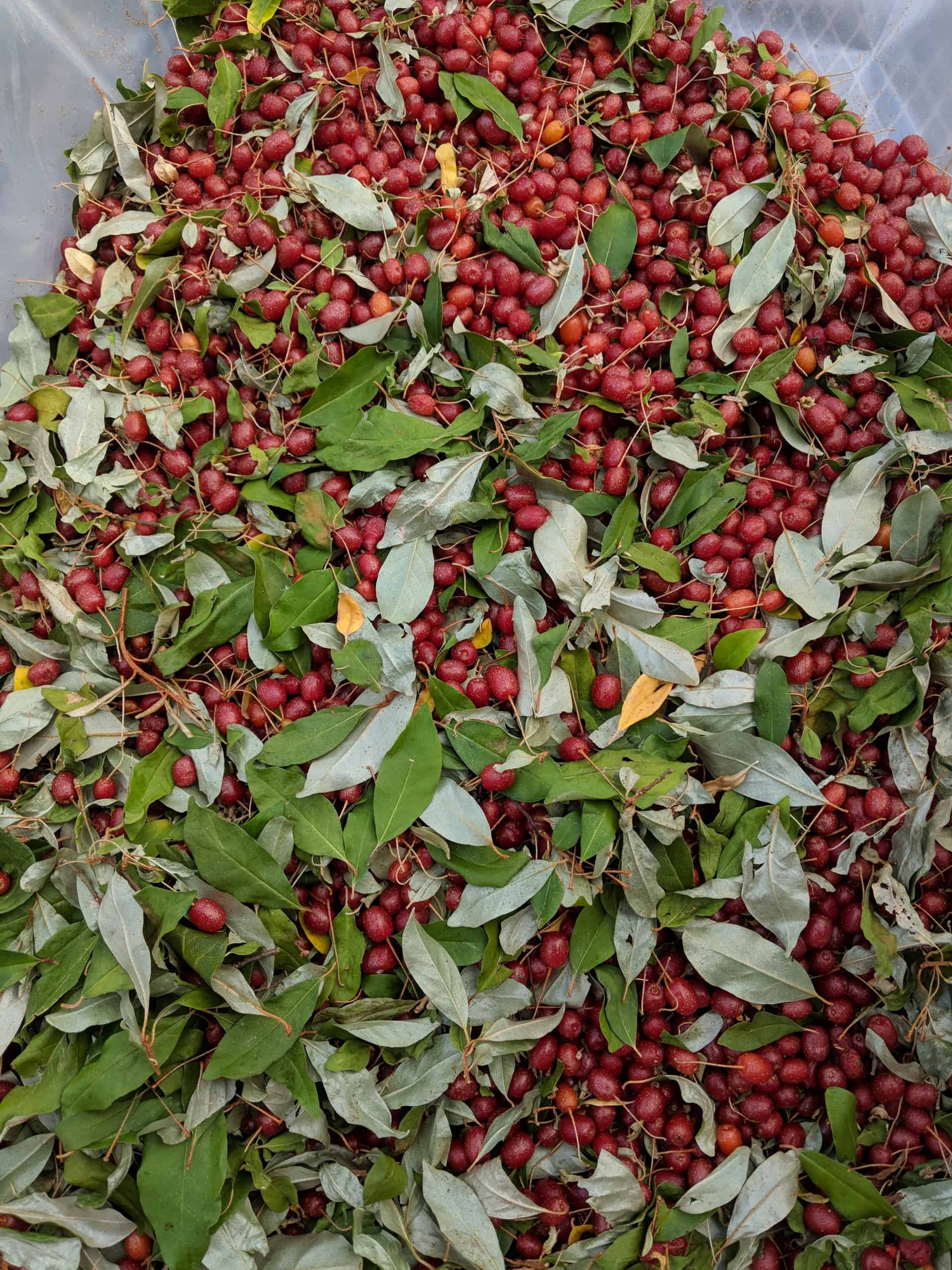
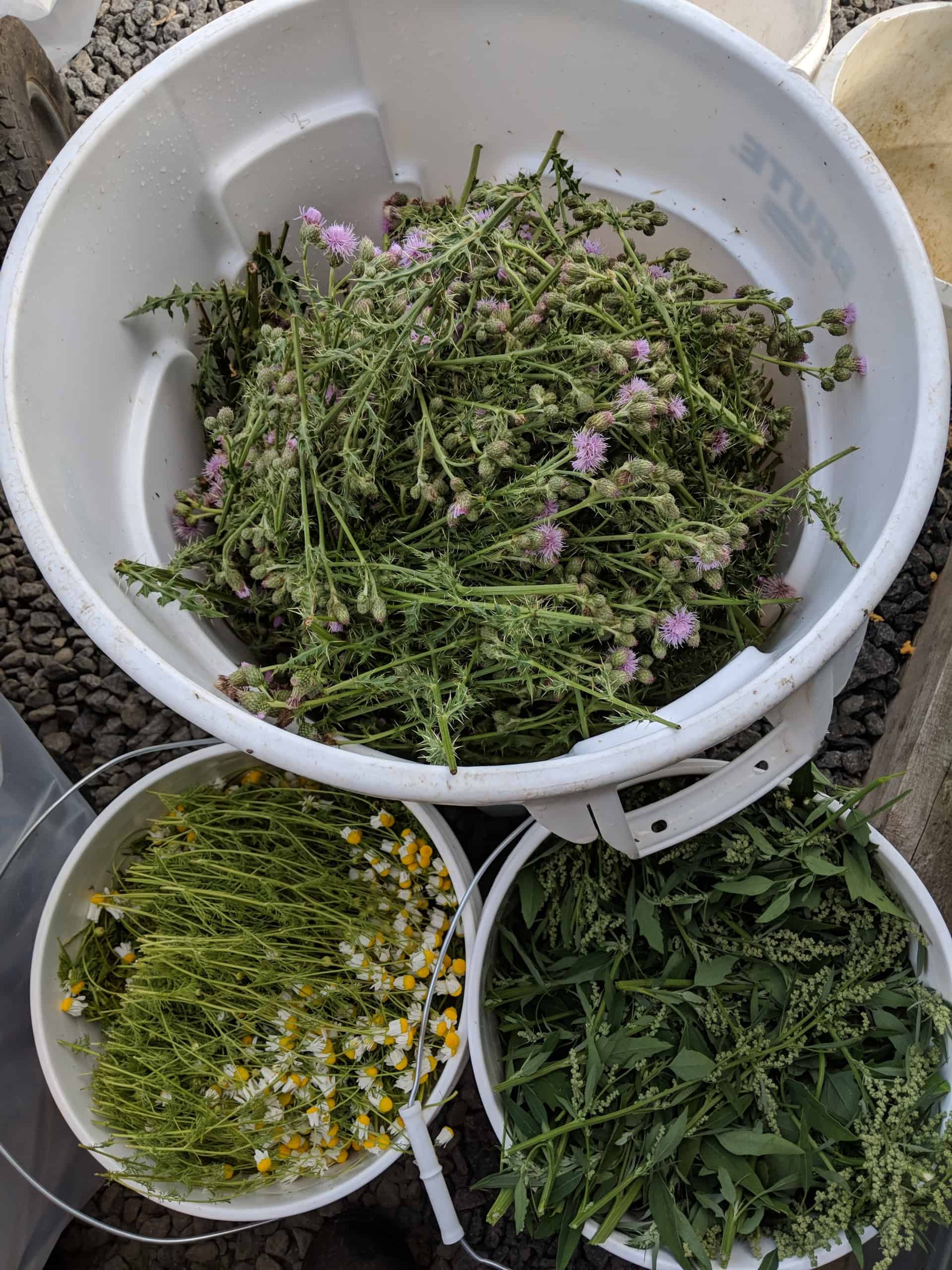
“They smell terrible,” Myron interjects. He is correct. The aroma is truly foul, like the bastard child of a Kombucha mother and a litter box. Shane enthusiastically pokes at the green sludge, releasing wafts of fetid fumes as he expounds on the benefits of microbes.
We then enter a climate-controlled greenhouse, where a plethora of strains grow in bottomless wooden beds that allow the plants to dig deep into the native soil. “We have beautiful farmland here,” Shane explains. “So we’re going down into that prime farmland, but it’s also built up with a well-aerated bed.”
While Shane is the mad soil scientist, Myron almost vibrates with his passion for the plant. When it comes to strains and quality, he’s opinionated, discerning, and irascible. As we wander the warmly lit greenhouse, he bemoans the trend cycle that keeps them constantly searching for the next hot thing at the cost of forsaking tried and true favorites.
“With this market, we’re rotating out strains all the time. You have to constantly have new shit. It’s a fulltime job finding new strains,” he says, inviting me to smell a dense bud of Granddaddy Purple, which they had to phase out for a while in order to keep up with the trend cycle.
When I say that sounds like a hassle, Myron laughs.
“Oh my god. It’s so annoying and what’s hard is that the people who use it for medicine get fucked. Because they need it. I’ve got people who come to me and say, ‘Listen, your GDP is so consistent. It really helps me. I need it for pain and need it for sleep.’ But the stores, they’re not reacting like that because the main rec consumer…It’s just all about trends.”
The upside? Sometimes they get an overstock of strains that are no longer popular and are able to give patients a really good deal on the medicine.
As we wander the farm, various members of the Cannassentials team introduce themselves. The place has a convivial vibe, a sense of family, and feels Oregon to the core–in other words, not short on beards, boots, tye-die, flannel, or insulated coffee mugs.
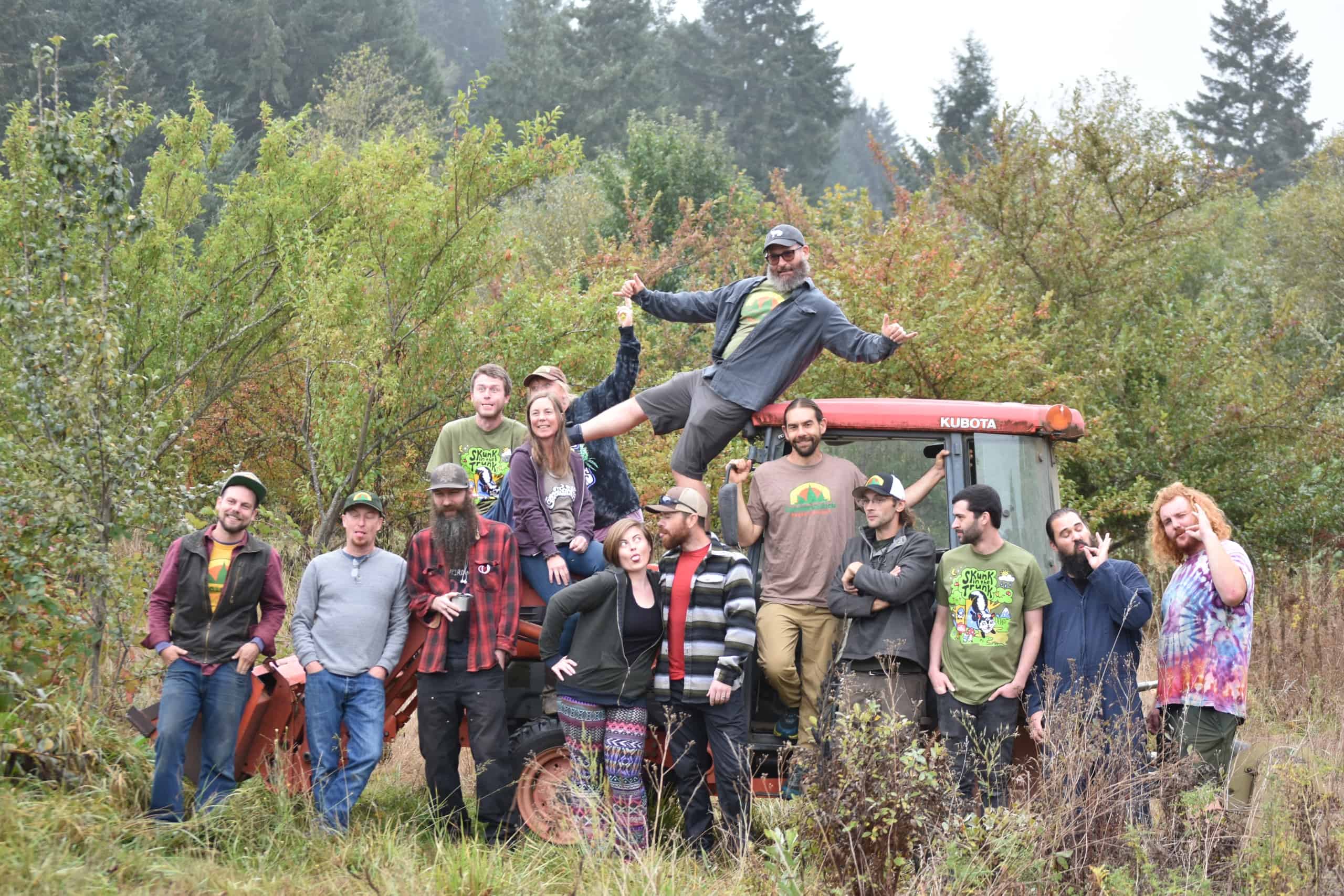
Photo by @north_westmedia
The curing process at Cannassentials is an extension of the company’s values.
“So like everything here, we repurpose things,” Myron says as he opens the door to a drying room. “These are old refrigerator containers which are fantastic because they’re fully insulated, they’re fully washable, and they’re all aluminum.”
Inside, fragrant branches hang on clever moveable tracks.
“They dry in here for two weeks,” he says. “You know, old school, with all the fan leaves, as big of branches as we possibly can.”
The phrase “kid in a candy shop” is overused, but it’s hard to think of a better analogy when Myron gets into the curing room and begins excitedly opening canisters to allow me to smell various strains at different stages in the process.
“This is the Spritzer,” he says, brandishing a container full of intensely fruity bud. “She’s still got the bubble gum, but you feel the wine coming on? Yeah. That’s the taste. It’s just amazing.”
Given their obvious commitment to best practices, I am unsurprised to hear Myron describe their trim process as “old school.”
“We trim all on the stem, no touching the buds,” he says. “No one wears gloves, and they trim directly into glass.”
For two guys with their feet on the ground and their hands in the dirt, Myron and Shane surprise me with the scope of their vision.
“Our business plan has always been to create a company that can survive and make a little money in the closed Oregon market,” Myron explains. “Make a name for ourselves for quality and integrity and build a solid Oregon brand. Then when federal legalization happens, we can find a big player to distribute us around the country and help us pay for the inevitable expensive national license.”
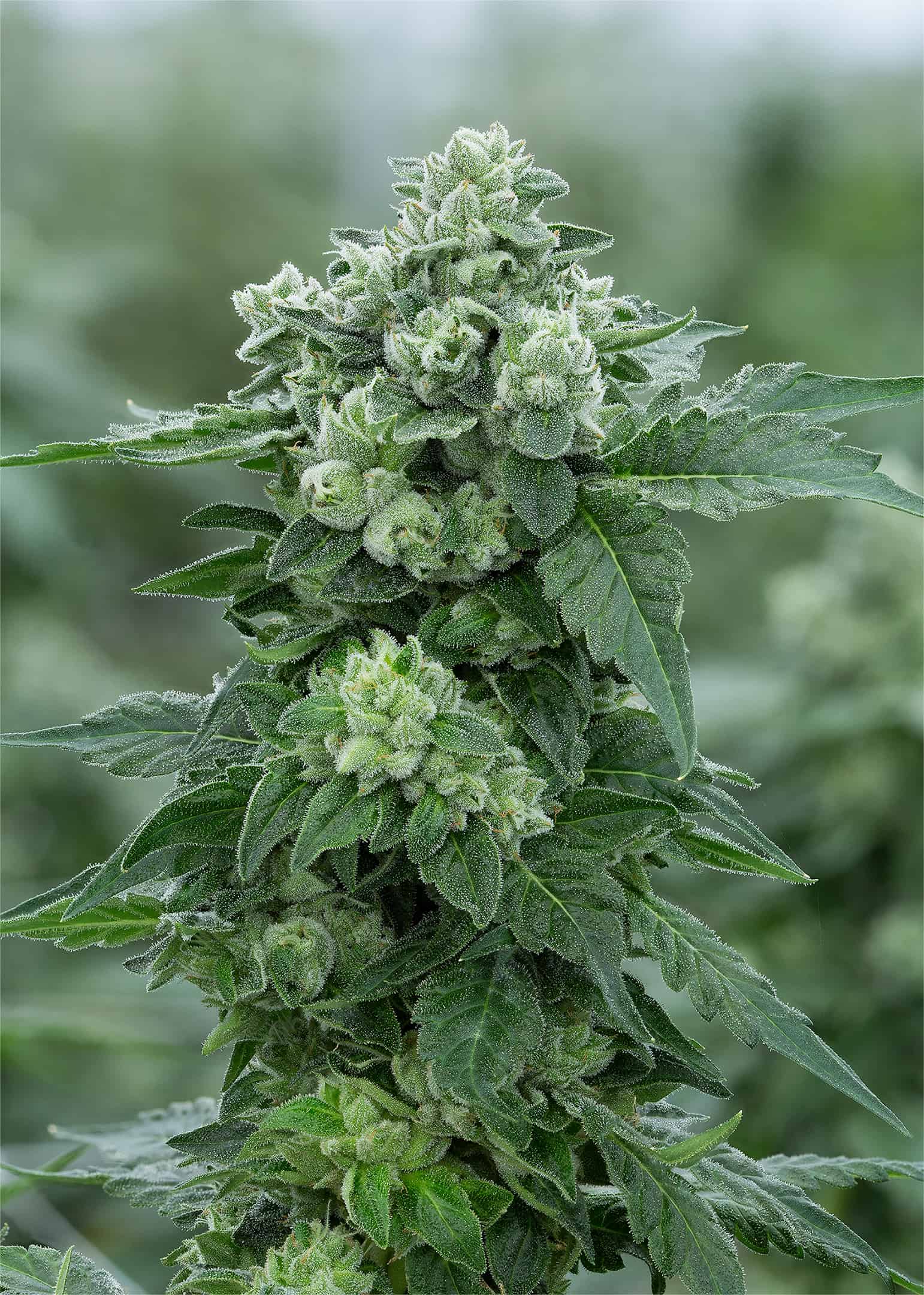
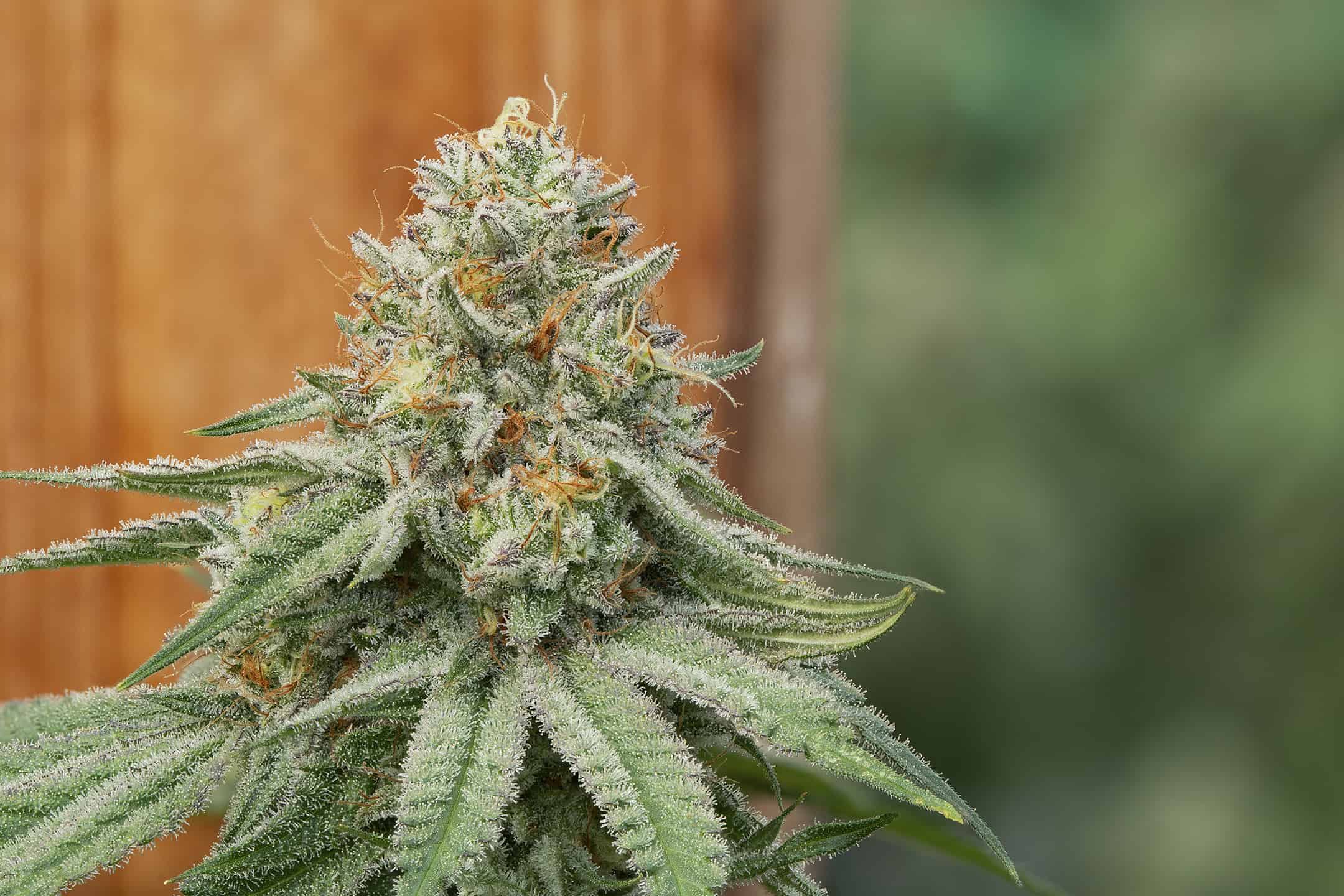
So far they haven’t taken on any outside investors, but they’d consider it if they could find someone who wouldn’t ask them to compromise the integrity of their operation. They aren’t looking for a lot of money—between 100 and 200k for a 5-10 percent stake, which they see as a long-term investment that likely won’t pay off until the brand is able to go national. They would never consider licensing their name to farms in other states, but have twenty acres to expand to if there’s ever a national demand for the kindest Oregon bud.
“We’re looking for a small investor or investor group that recognizes what we are doing and wants to support us to get to that national stage,” Myron says. “We’re hoping to find an investment partner that can help us on business and marketing decisions, while leaving us to run the grow the way we see fit.”
When I later get home and smoke a bowl of their exceptional Monkey Trick, I fervently hope that they continue to find a way to grow it exactly as they see fit.
Scroll below to see more pictures from the farm tour:
All images by @north_westmedia


